La Vie en Rose: can the Jaguar Type 00 reset the narrative surrounding the brand’s reinvention?
This is the Jaguar Type 00, the first physical manifestation of the reborn brand’s new commitment to ‘Exuberant Modernism’. We take it for a semiotic spin
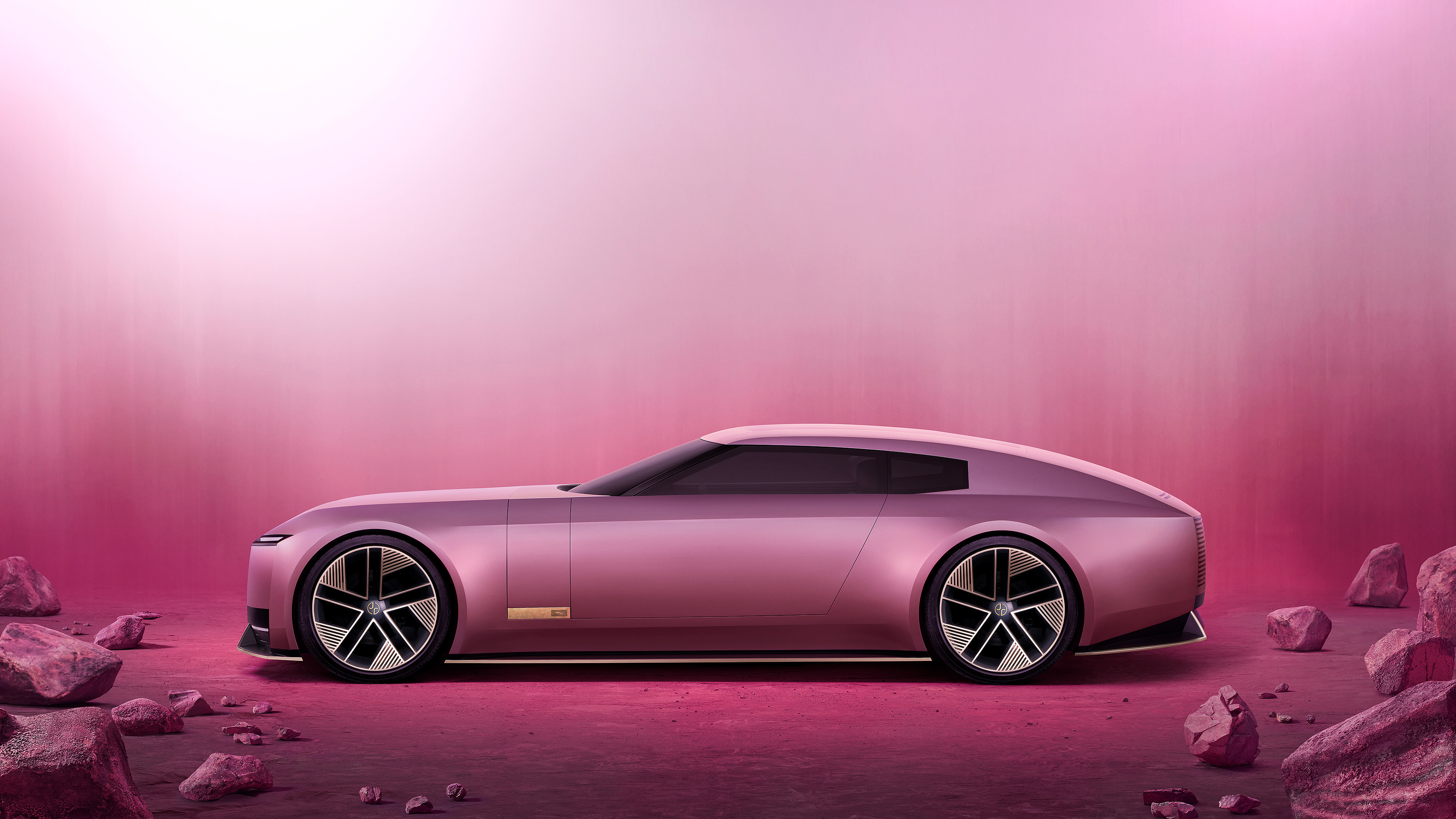
This is the long-awaited Jaguar concept car, the Type 00, a vision, preview and mission statement of what the revived, rebooted, rebranded and re-shaped British car maker will be making from 2026. Do you feel underwhelmed? Outraged? Or stirred into action?
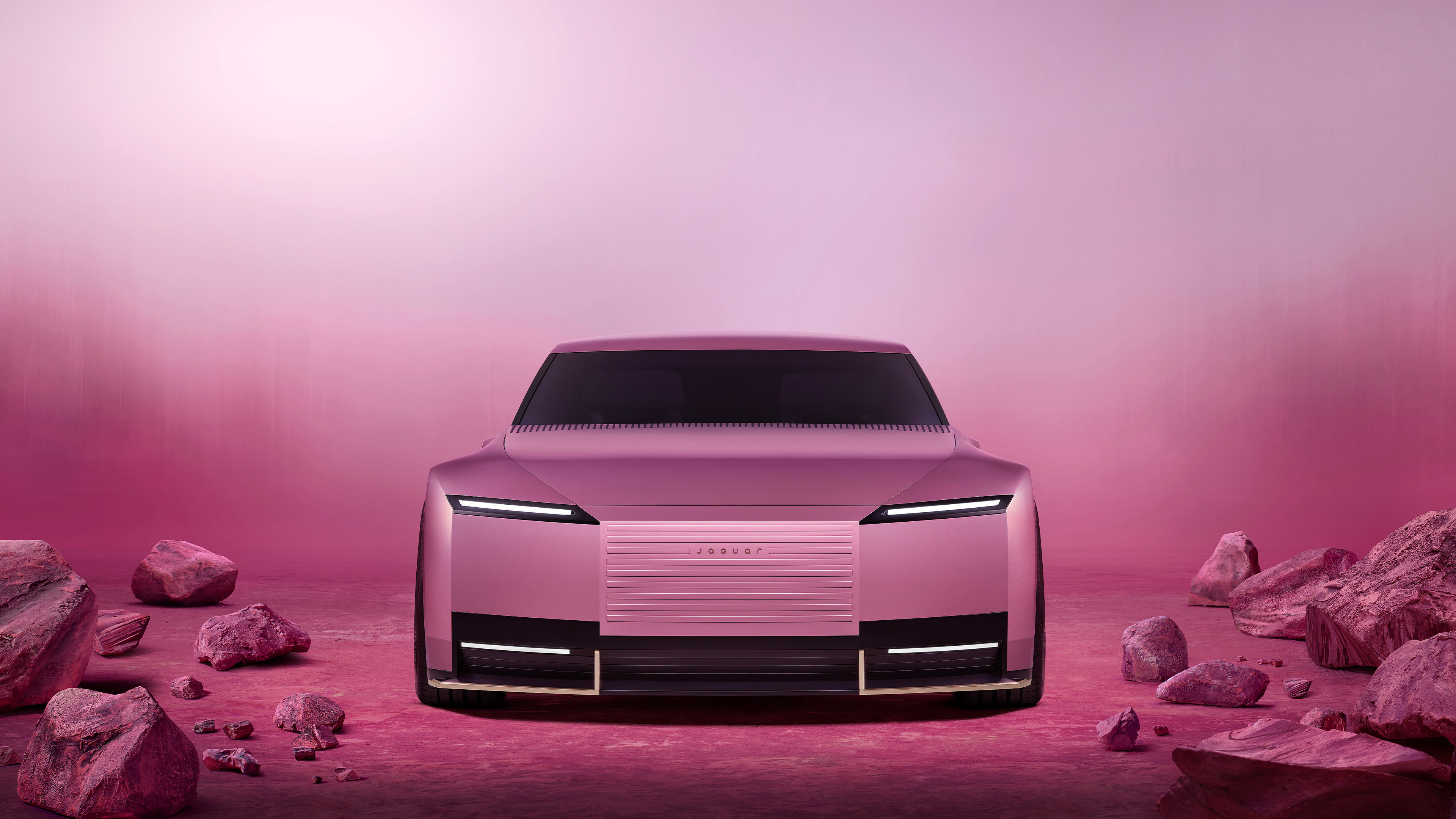
The Jaguar Type 00 concept has bluff front end with minimalist LED lights
A low-slung, monumentally long 2-door grand tourer, Type 00 is simultaneously futuristic but also richly evocative of motoring icons past. Although these very stylised images use a truncated form of perspective that don’t enhance the three-quarter views, Type 00 wears minimalism on its sleeve, with simple yet muscular surfacing. The side profile is perhaps the most conventional thing about it, with long bonnet and low glasshouse, terminating in a tapered, window-less boat tail rear.
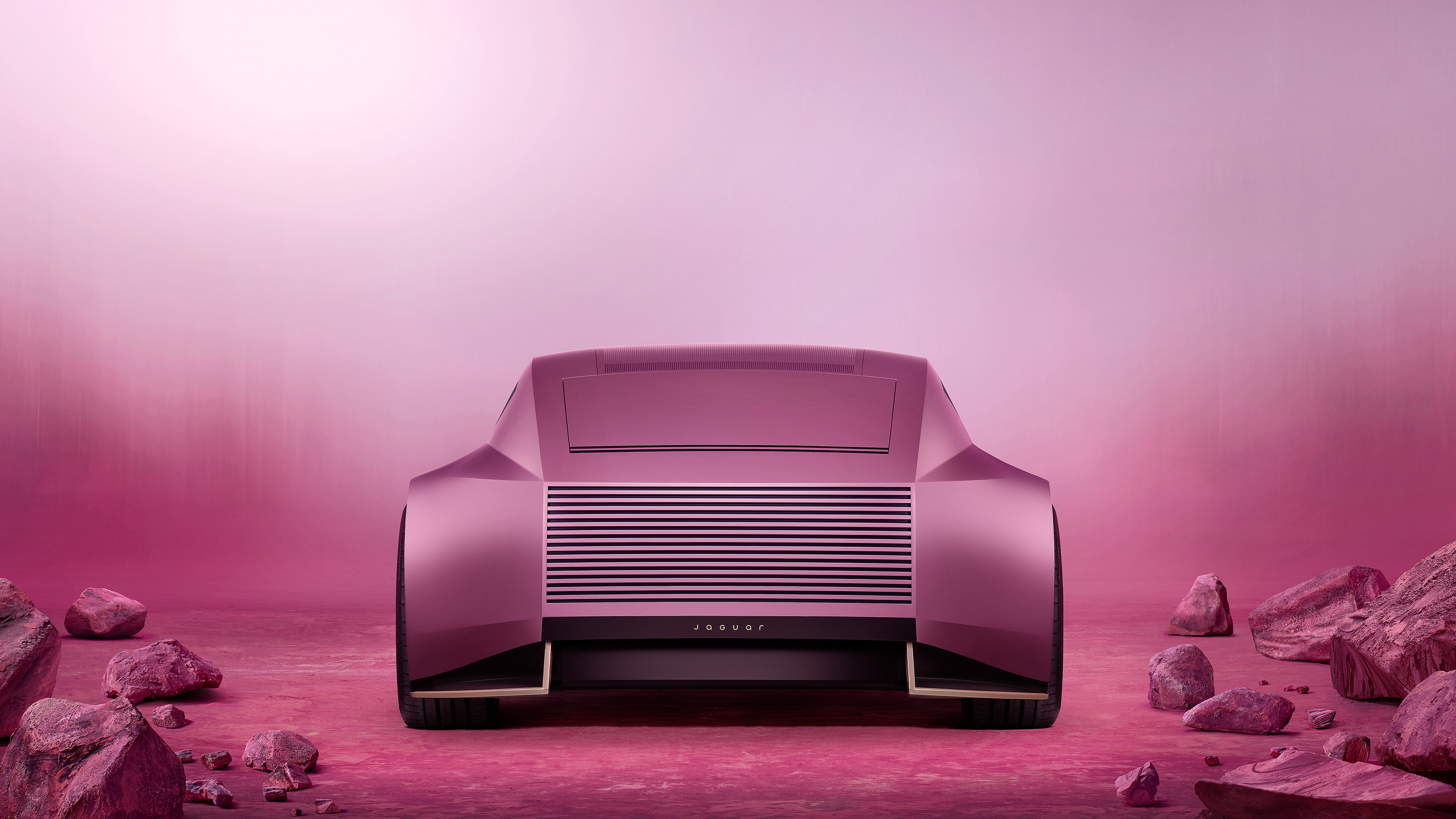
The Jaguar Type 00 concept has concealed rear lights and no rear screen
In contrast, the frontal and rear treatments are a radical departure; gone are any cues from Jaguars past, such as the oval air intake or oval headlights. Instead, the front bears an abstracted grille pattern, mirrored and inverted on the rear, where it serves as a disguise for the rear lights. At the front, four sleek LEDs occupy each corner of the rectangular frontal area. Subtle, it is not.
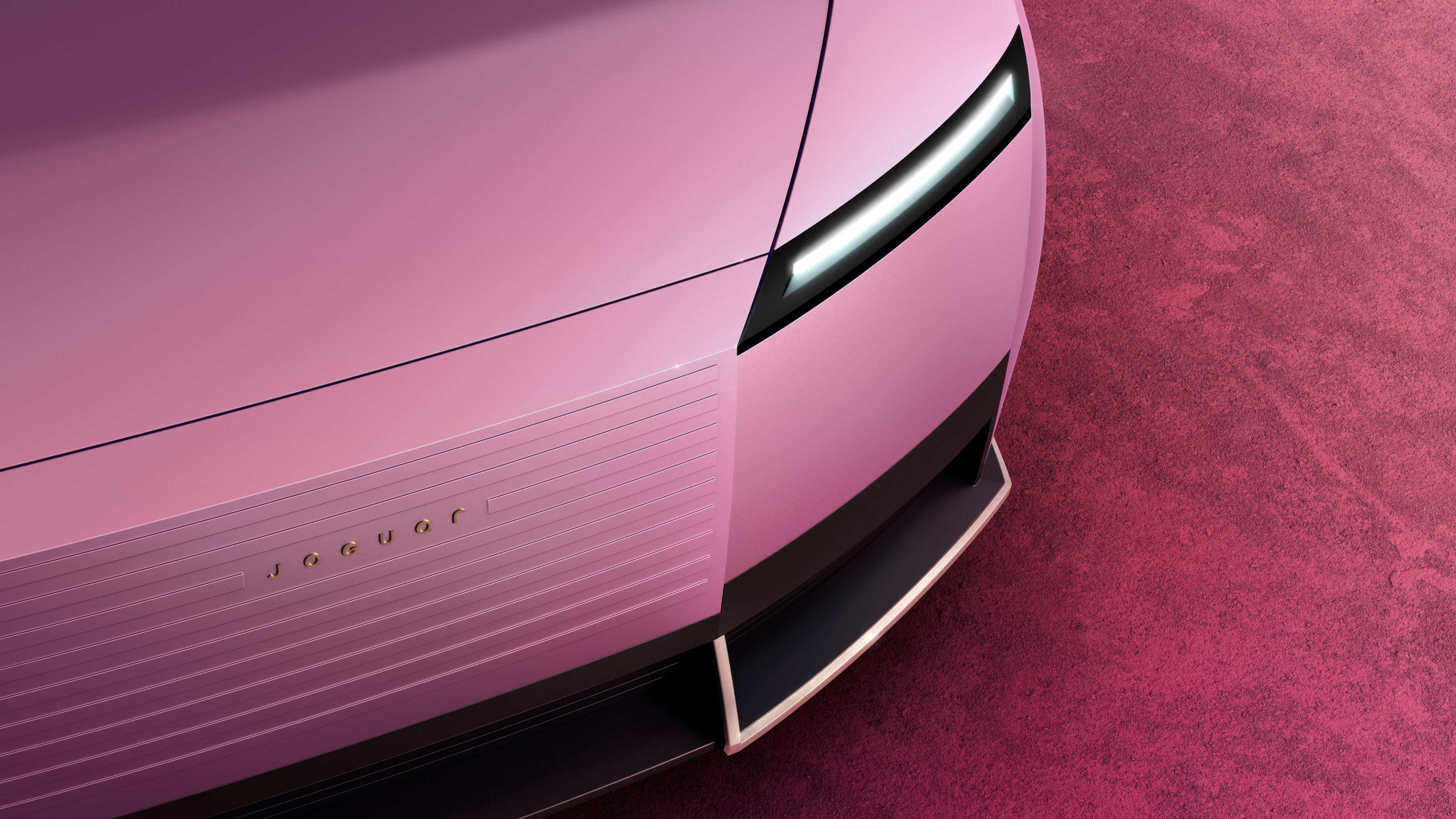
The frontal treatment of the Jaguar Type 00 concept
Few re-brands have caused as much of a storm as the one Jaguar launched in November 2024. An ethos that promised to ‘Copy Nothing’, along with a new logo, symbol and makers mark, the rebrand – which was undertaken internally – instantly summoned a reactionary backlash from across the board. Interestingly, the one sector that received the bold new graphics and imagery with a modicum of restraint and cautionary optimism was the motoring press.
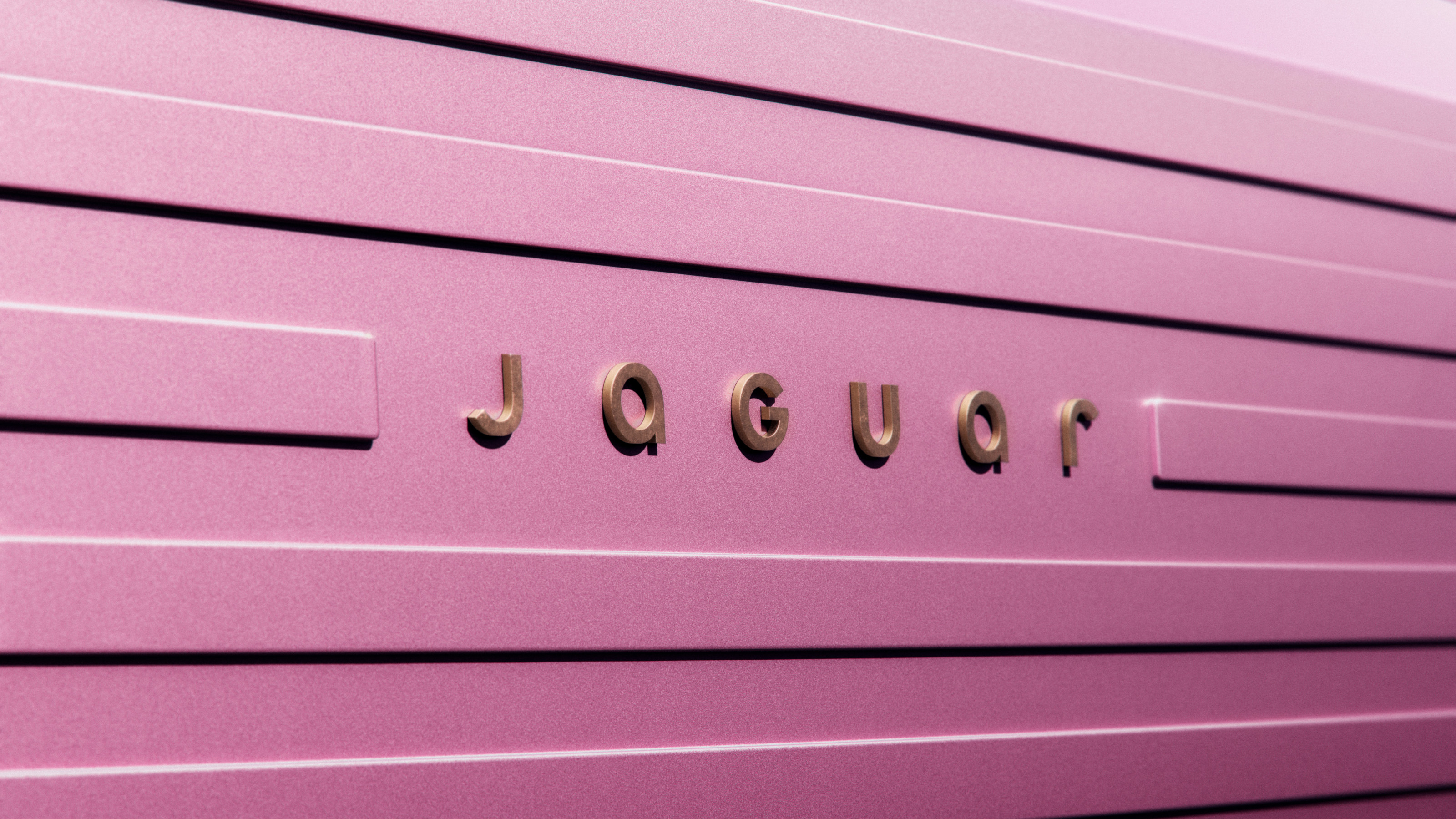
The new Jaguar branding has caused controversy from the outset
This is because the auto industry is well aware of Jaguar’s travails. For too long, the brand (founded in 1935) has languished as the eccentric, ageing sidekick to Land Rover’s forward-looking and hugely popular range of titanic SUVs. Land Rover, or Range Rover, Discovery and Defender, as we’re now supposed to refer to the model line-up, has ridden the crest of a wave for almost 15 years, pushing SUVs further and further upmarket. In comparison, Jaguar is the hard-up sibling, constantly missing sales targets, failing to break into new markets and not making much headway against established competitors.
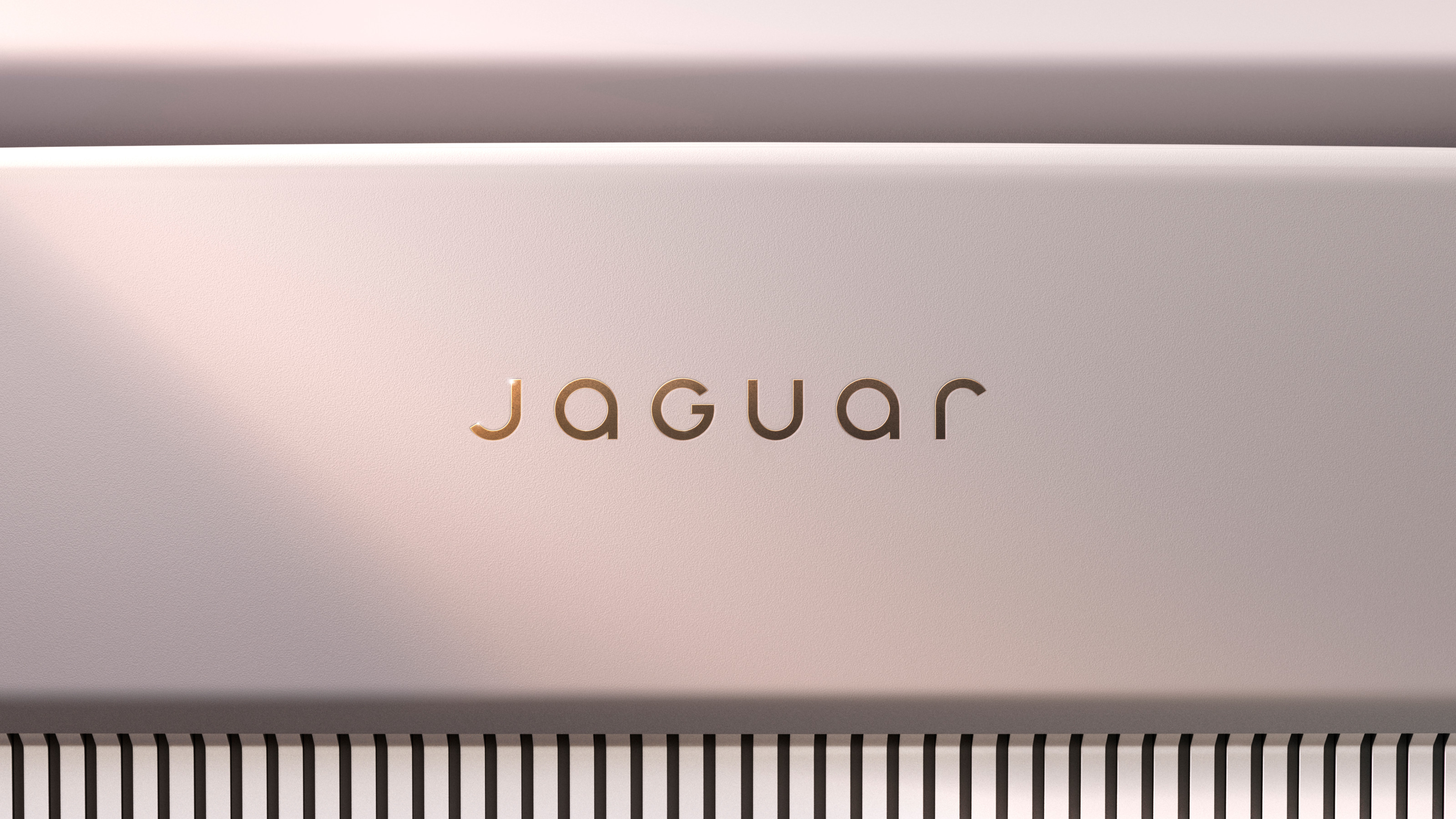
Inside and out, Jaguar has maintained a consist, minimalist approach
For every generation of Jaguars in recent memory, there’s been a sense of a missed opportunity. Strikingly beautiful concepts have come and gone – the 2000 F-Type Concept, the 2003 RD-6 concept, or the 2011 Bertone B99 saloon concept to name but three – all eventually overlooked in favour of more prosaic, safer options.
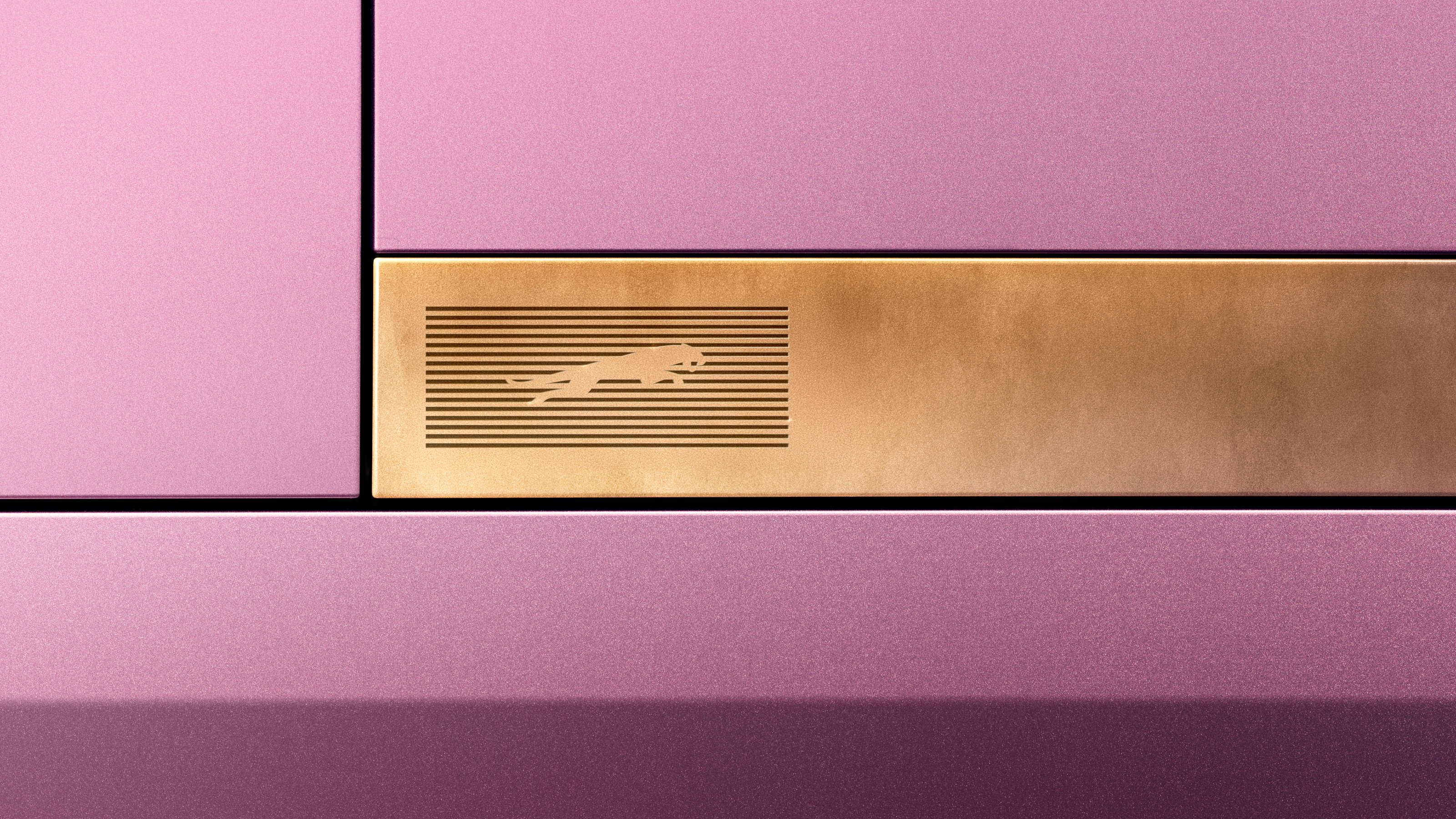
The new 'Leaper' symbol, etched onto brass on the Type 00's flank
Even bold production cars didn’t fare much better. The XJ41/XJ42 project that was to provide a true replacement for the E-Type way back in the 1980s limped through to the early 90s before being unceremoniously canned by Jaguar’s then-new owners, Ford (Jaguar’s design eventually ended up as the basis of the Aston Martin DB7). And more recently, there was the XJ that wasn’t, an all-electric top-flight model meant to go head-to-head with Porsche’s Taycan and the Audi GT. Cancelled at the very last minute, at a cost of £100s of millions of pounds, new management presumably felt it just couldn’t be a contender.
Wallpaper* Newsletter
Receive our daily digest of inspiration, escapism and design stories from around the world direct to your inbox.
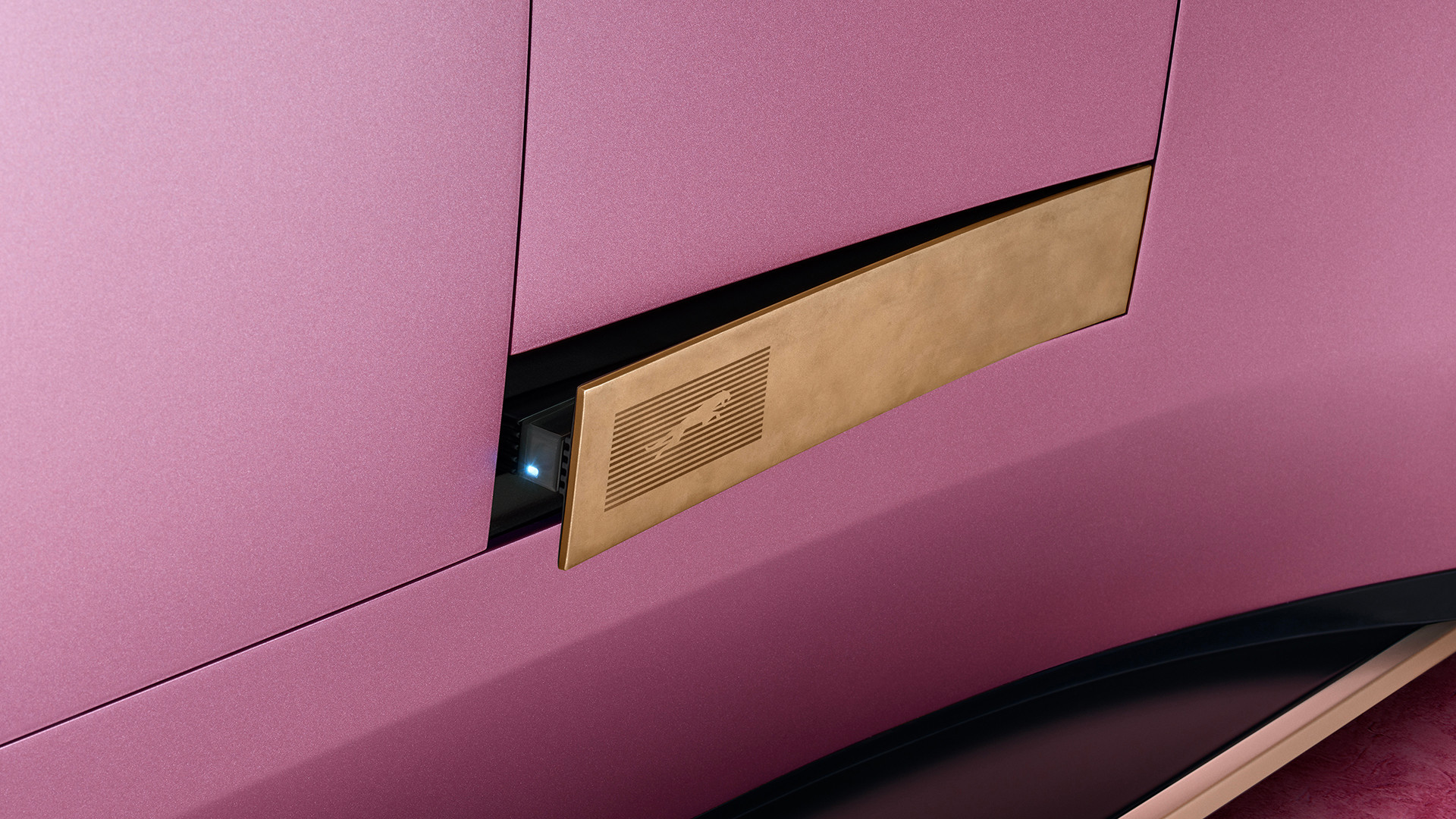
The brass plate conceals the rear-view camera
Does the Type 00 preview a car with a more fighting chance? We have to hope so. The company’s Year Zero has been overseen by none other than Gerry McGovern, the man who managed to splice modernist ideals with luxury trappings in his role as Chief Designer at Land Rover. Appointed Chief Creative Officer to the Board of Management at JLR in January 2021, Professor Gerry McGovern OBE (to give him his full title), is gifted with something of a Midas touch, overseeing models that have elevated the LR in JLR into the luxury stratosphere. The flagship Range Rover now starts at well over six figures, and if you’re sufficiently determined with the options list, you can double that.
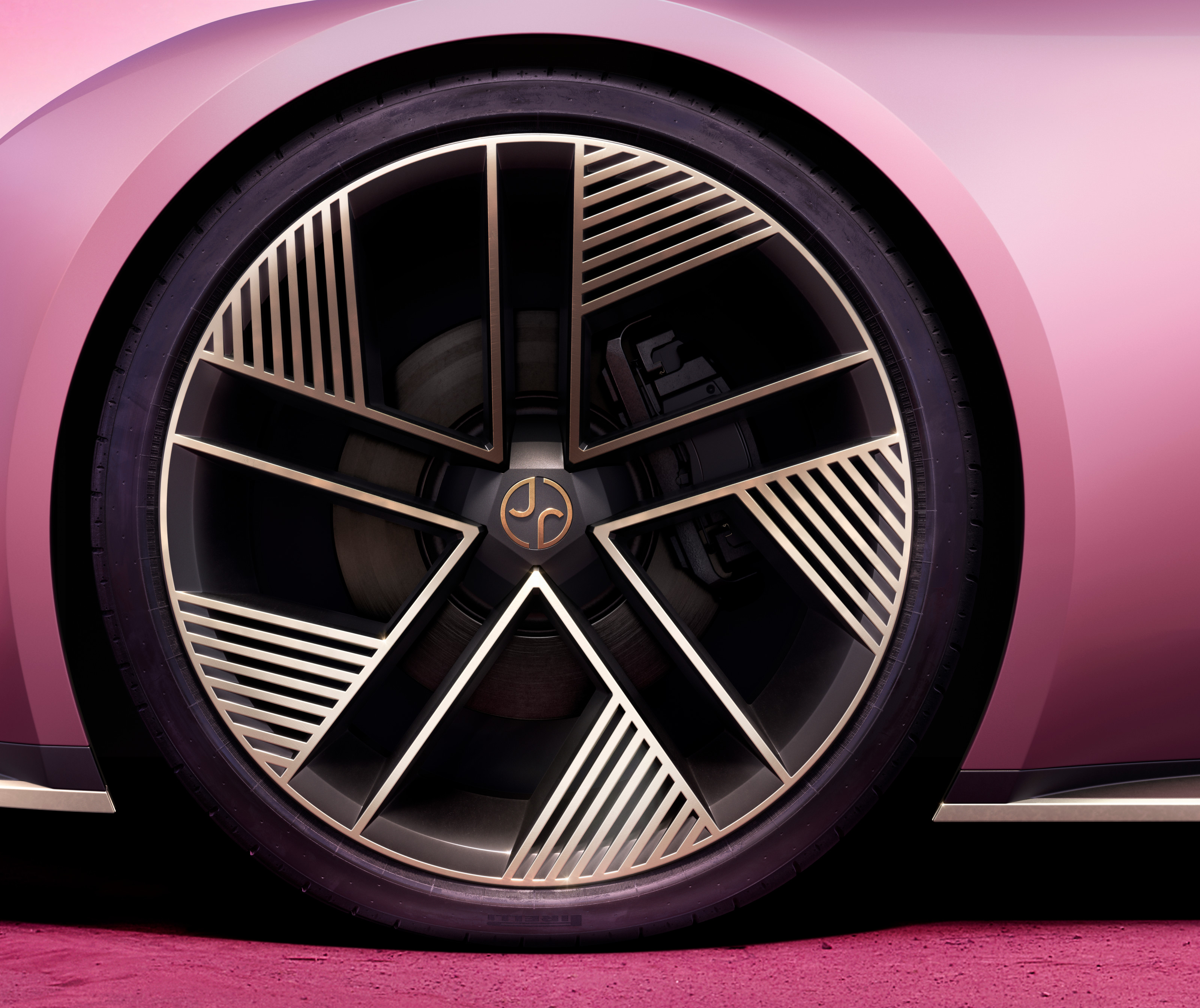
The Type 00's 23" wheels fill the entire wheelarch
All of this goes some way to explaining Type 00’s atypical sybaritic overload. If we analyse the Type 00 and look past the concept car sheen to see the four-door electric GT that’ll be revealed a year from now, certain things stand out. For a start, there are the proportions. The I-PACE is one of the few EVs to make the most of a pure electric platform in order to escape decades of conventional wisdom about automotive proportion. Type 00 rows that right back.
There’s a cartoonish, almost gaming-adjacent stance to the long, low and wide proportions, as if this was a car from Grand Theft Auto or Cyberpunk 2077. It could even be a stylised conveyance straight off the streets of 2000AD’s Mega-City One (interestingly, Land-Rover supplied futuristic vehicles to Sylvester Stallone’s 1995 Judge Dredd film, set in 2139. These ‘City Cabs’ were designed by David Woodhouse, a former colleague of McGovern).
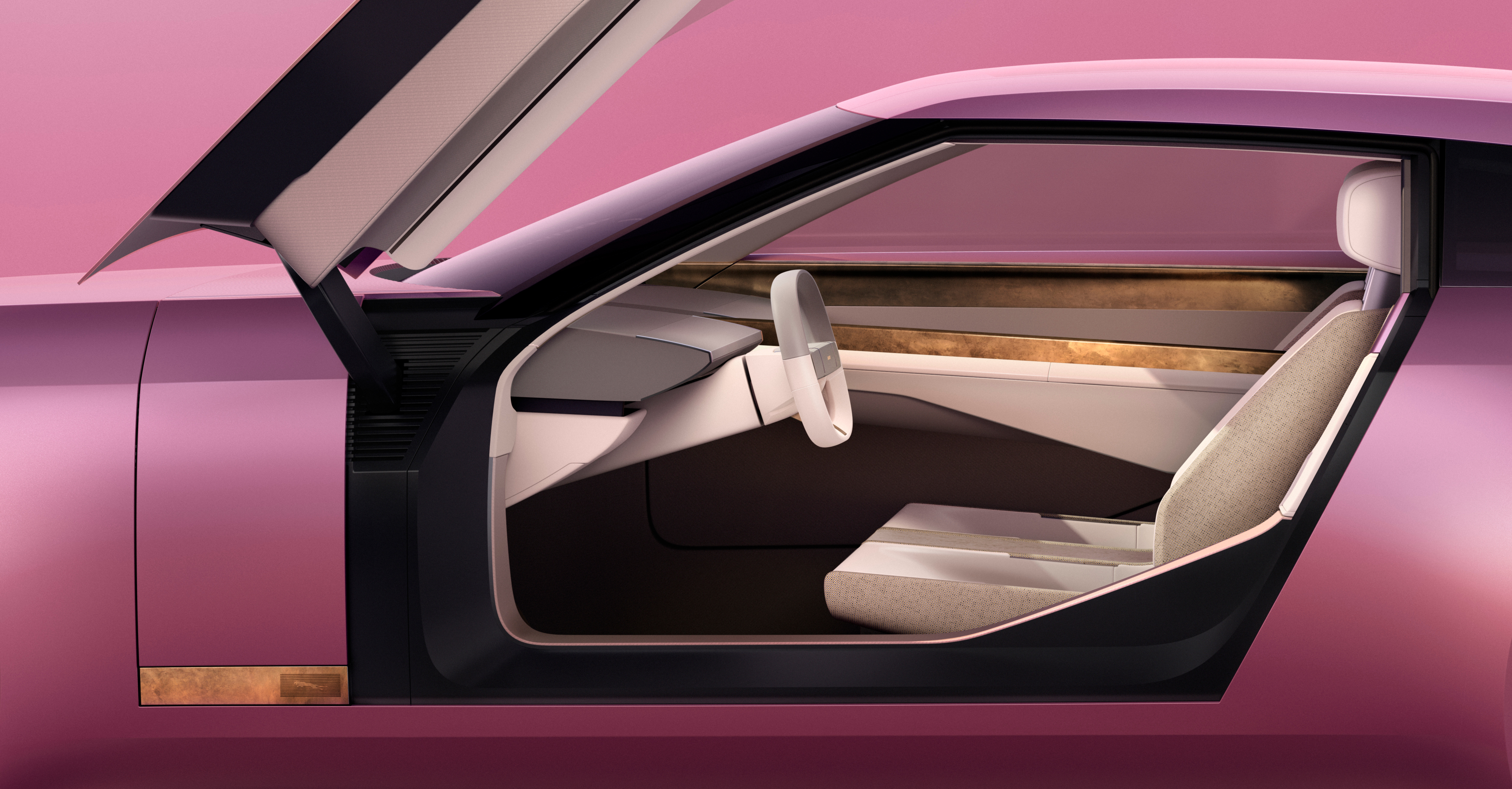
Butterfly doors provide access to the Type 00's interior
The butterfly doors, stark, angular shut lines, shallow glasshouse and massive, arch-filling wheels all scream ‘concept’, implying a level of fit, finish and polish that’d be hard to achieve at three times the projected £100K+ price point of the new GT. Inside, too, there’s a reductivism that couldn’t survive a first pass from the legislators, as well as materials like travertine and brass that have few precedents in car interiors.
There’s no leather, just woven textiles, and an almost complete absence of buttons. Twin foldaway touchscreens provide information, whilst driver and passenger are separated by a 3.2m long ‘brass spine’. Another conceptual flight of fantasy is the Prism case, containing three material ‘totems’ of brass, travertine and alabaster that can be theatrically inserted into the centre console to change the mood of the interior. This includes the graphics, lighting and soundscapes, and presumably previews a more practical mood-changing system for the production car.
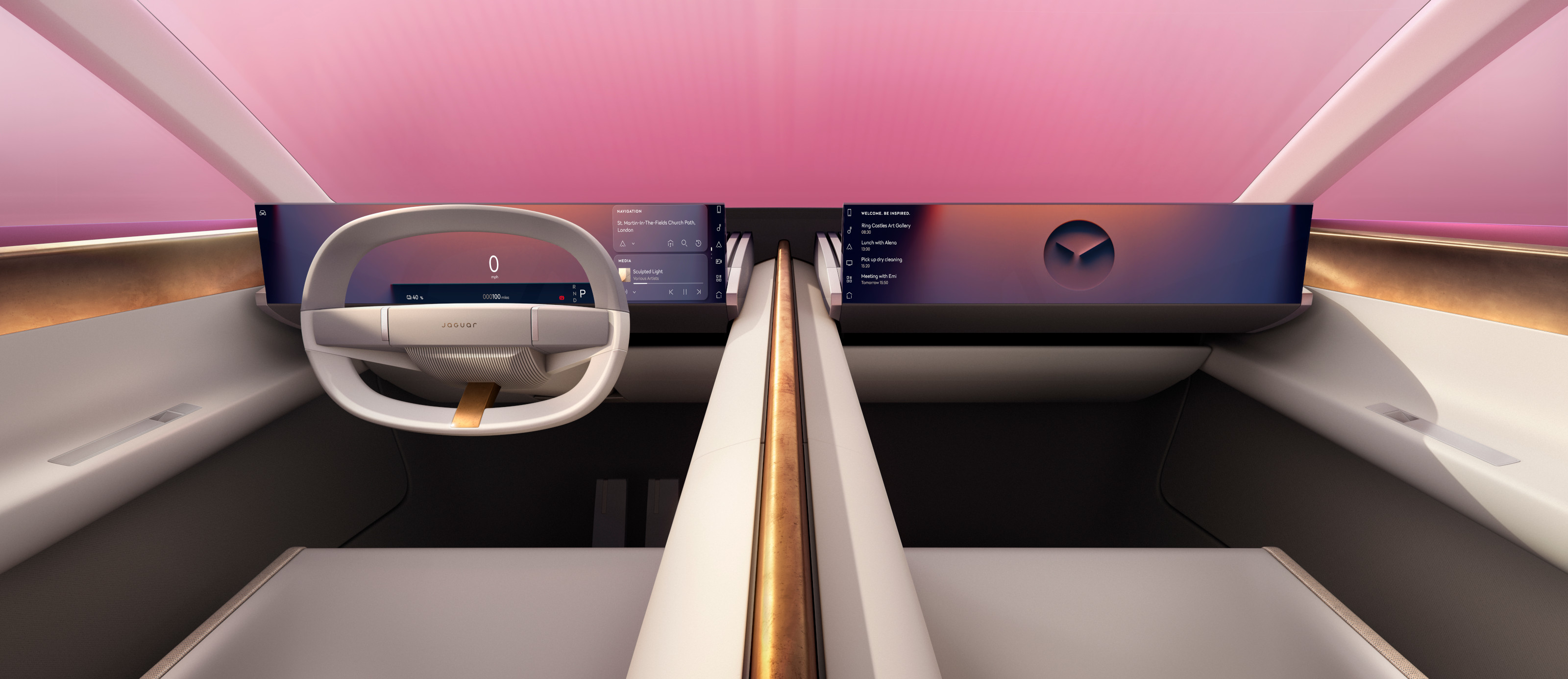
The Type 00 with Design Vision Screen deployed...
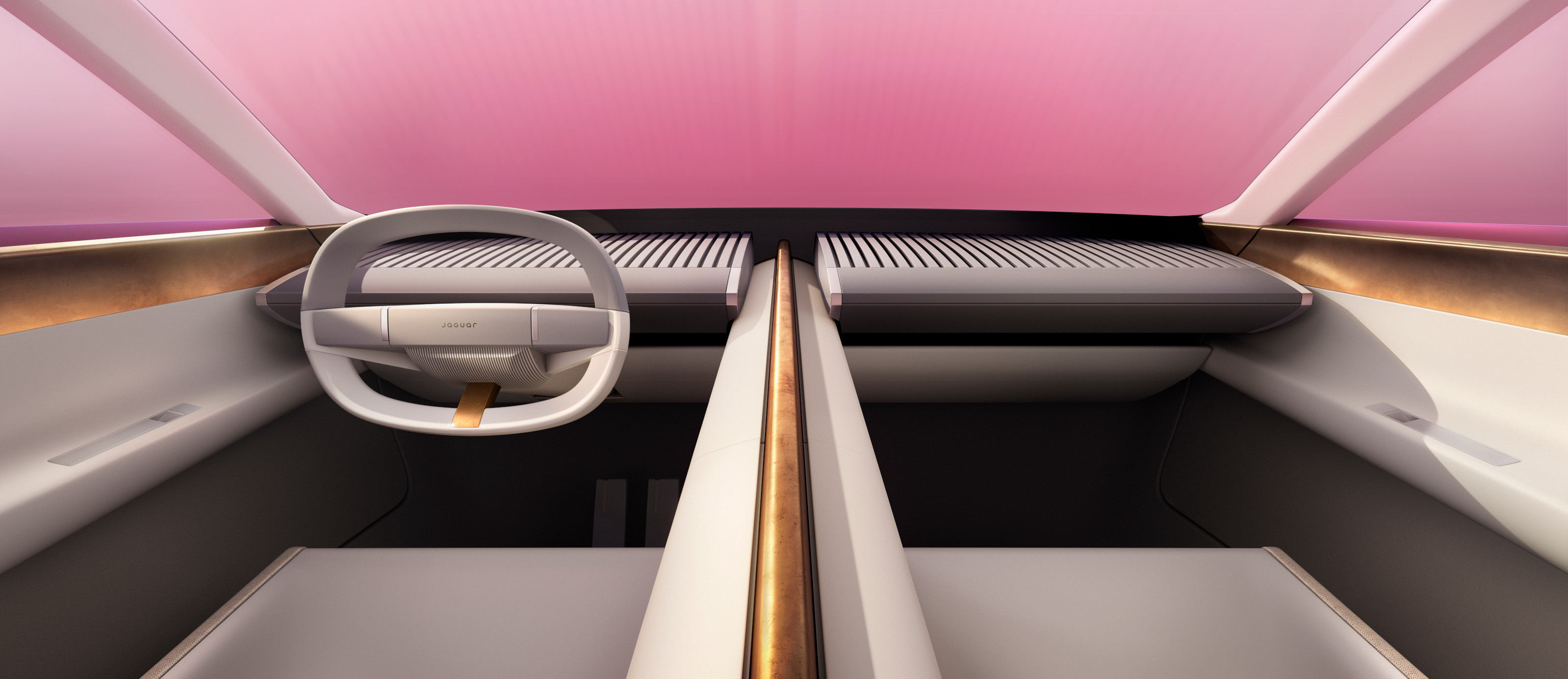
... and stowed away
After all this sturm und drang, it’s almost a let-down to find that the proposed new model will have a range of 430 miles, even if it’s promised to be the most powerful Jaguar ever made. The new Jaguar Electric Architecture (JEA) that underpins all three of the forthcoming new models is definitely more advanced than anything JLR has managed to date, including next year’s all-electric Range Rover, but it’s not quite the technological tour-de-force one might expect from such an overtly radical campaign. Jaguar set the bar very high before attempting to get over it.
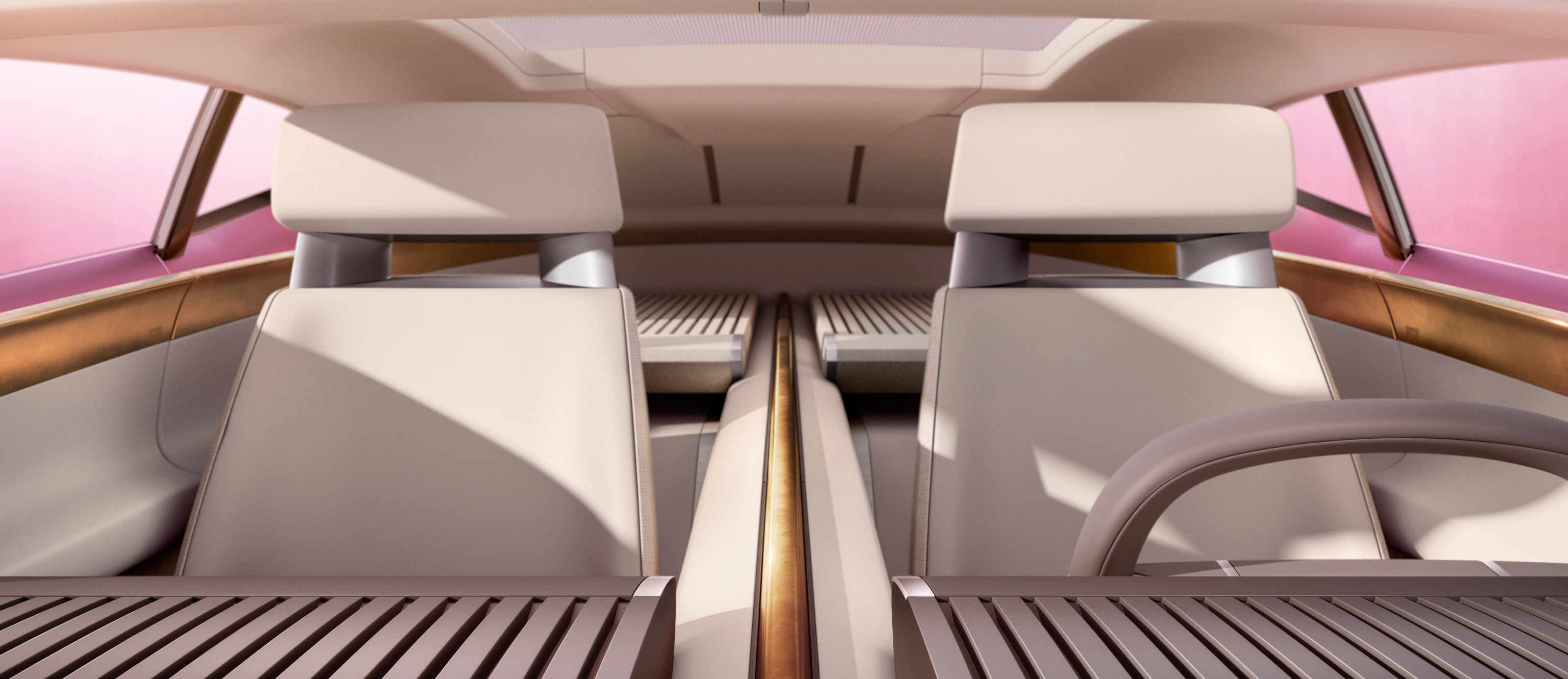
The Type 00's cabin contains travertine, brass and textiles
The most pertinent question you’ll hear from both punters and pundits is whether the Type 00 can stir up enough demand for what will become one of the most expensive production model Jaguar has ever made. Given we’re still 12 months out from production reality, armchair sages will have to wait a bit longer. However, Jaguar has certainly sparked debate. With cars now an integral part of the culture wars, from the perceived virtue signalling of the EV to the callous indifference many read into SUV ownership, to the mixed messages given out by electric SUVs and the ideological panic of the Tesla-owning coastal elites, Jaguar’s boldness invited controversy like no other.
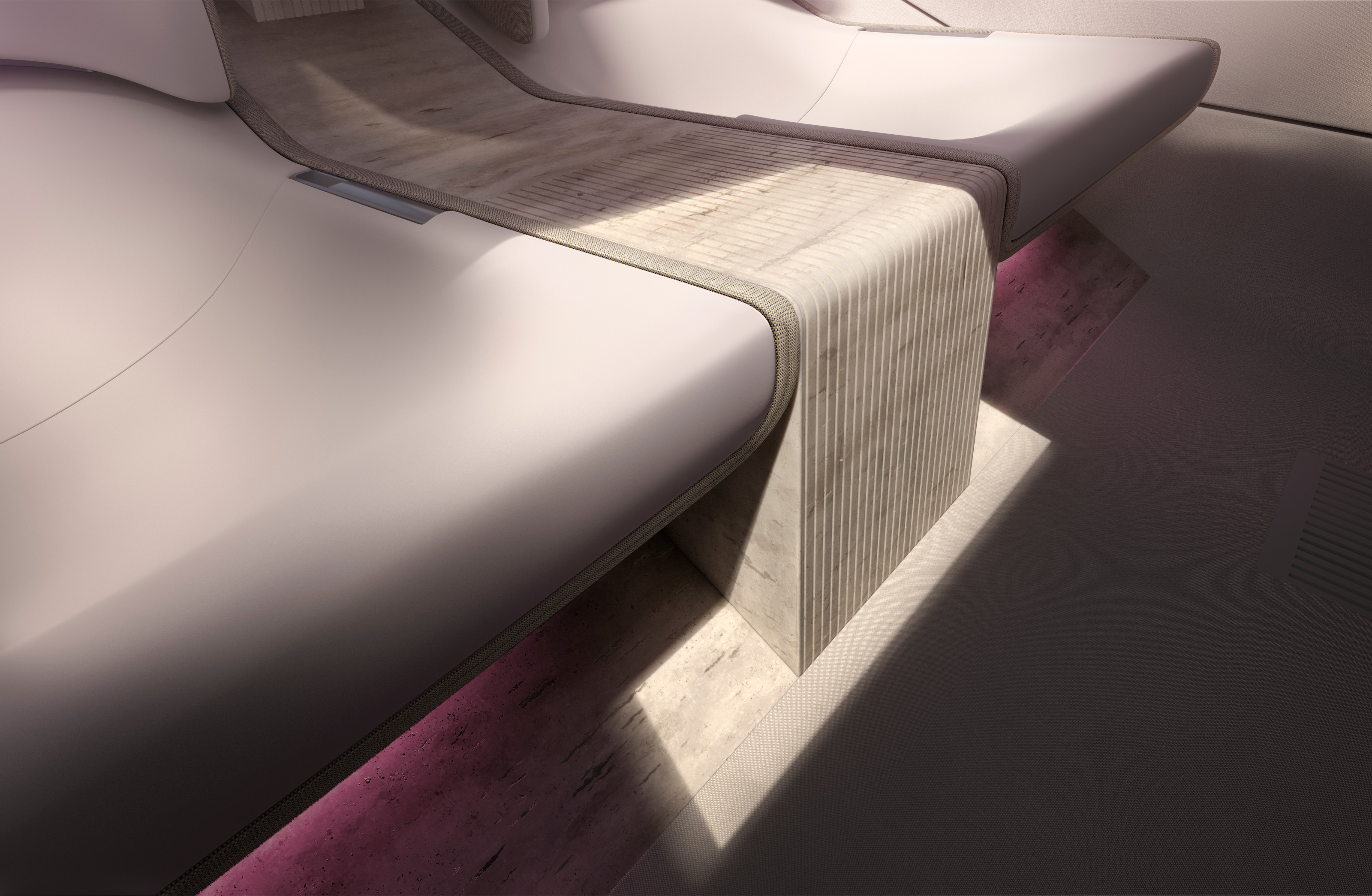
A waterfall of travertine forms the centre console and seat support
This has been problematic because the company, whether it liked it or not, was mostly admired by both small ‘c’ and big ‘C’ conservatives. If it had an edge, it was one sharpened only by cads and villains. Type 00 has ridden headlong into this symbolist minefield and the culture warriors have let rip. Whatever the merits or demerits of its rebranding, it’s worth recalling that Jaguar has always been bad at presenting itself. In 2005, an ill-conceived set of ads under the strapline ‘gorgeous’ (narrated by Willem Dafoe, no less) managed to cement the image of the Jag driver as a silver fox with a penchant for dating much younger women. It missed the mark by about three decades.
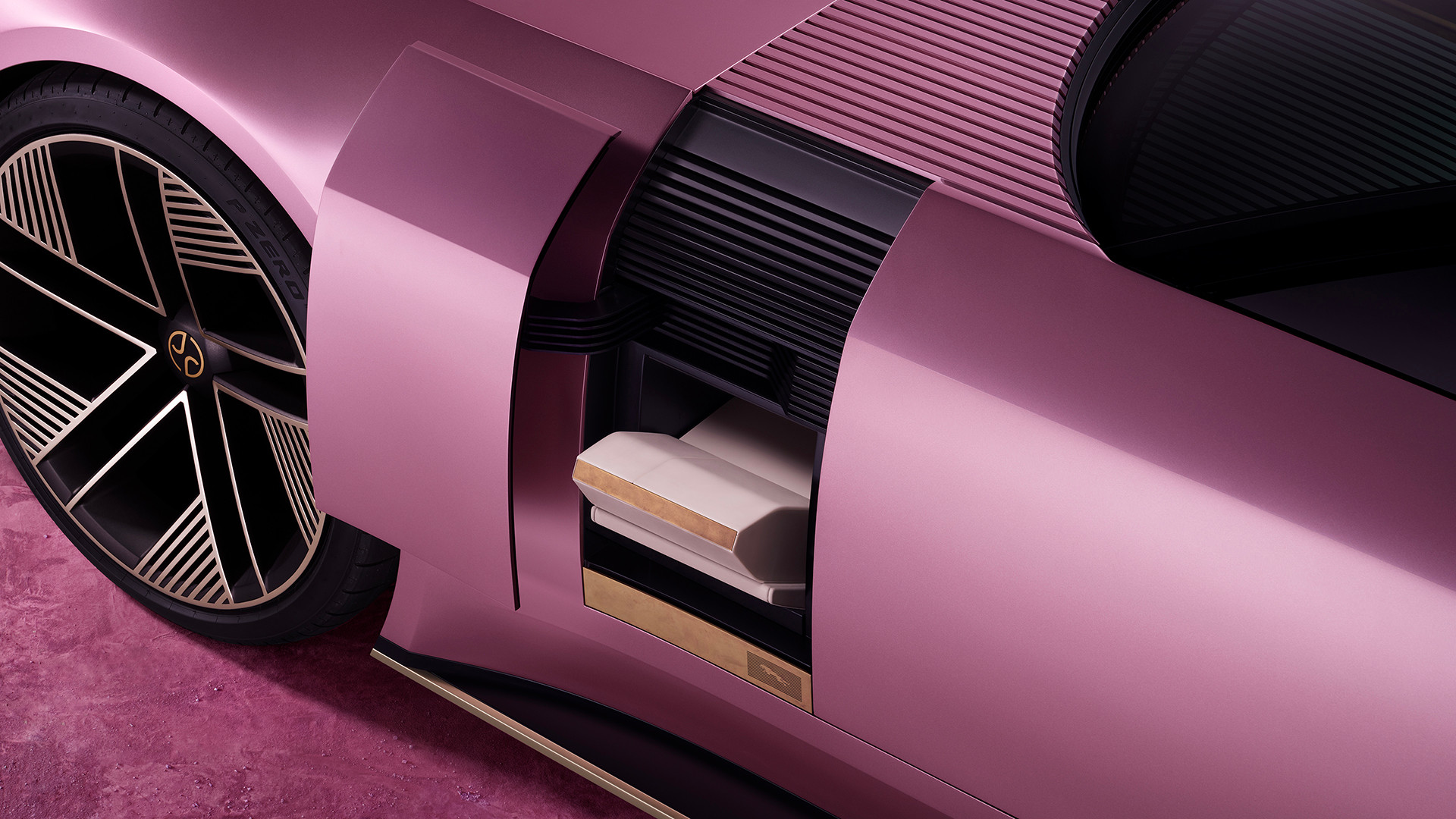
The Prism case is stored behind the front wheelarch
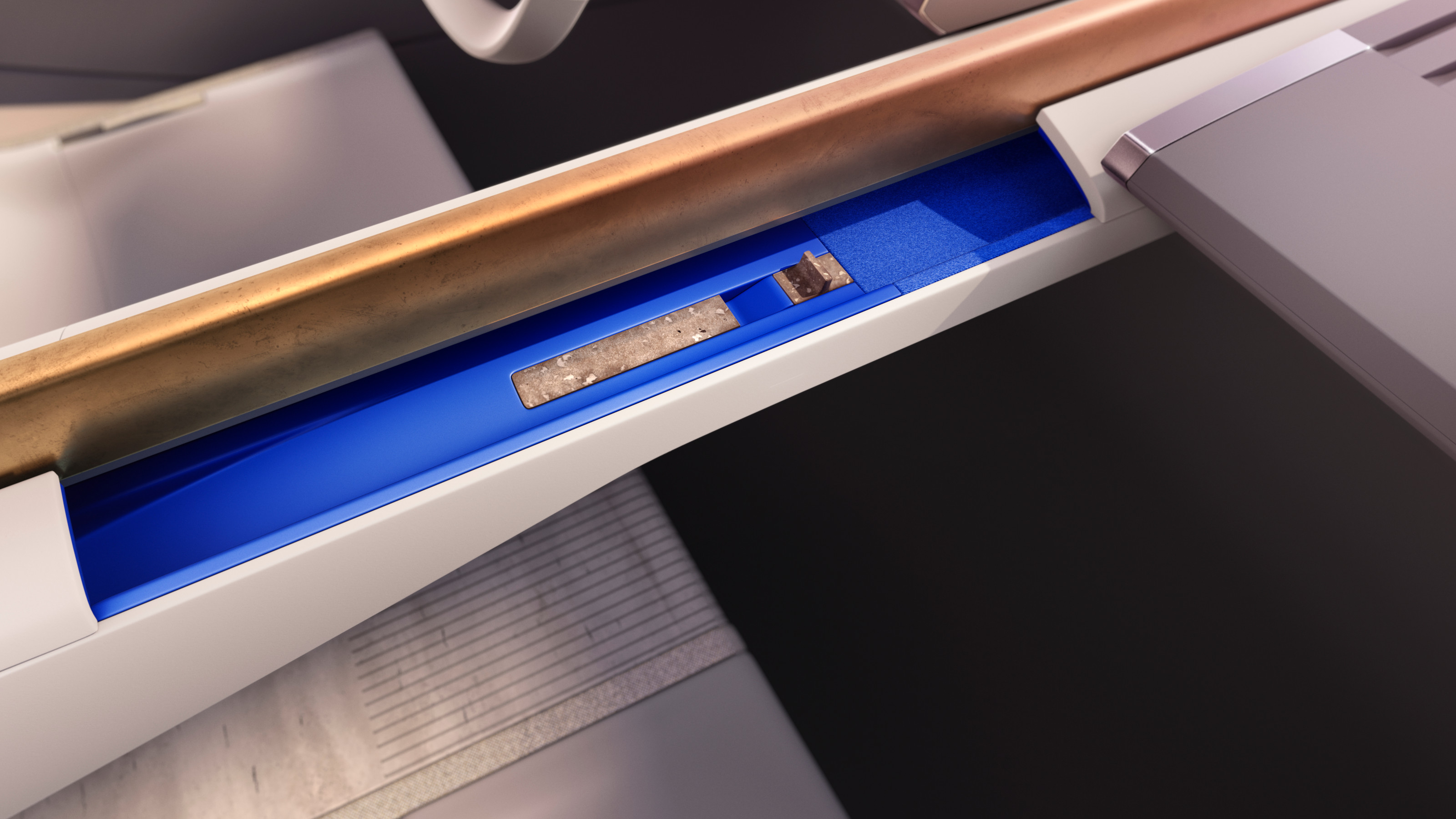
The material 'totems' are slotted into the central spine to change the car's interior moods
A decade after that, the company was out of time yet again, mired in the sub-Guy Ritchie mindset of ‘it’s good to be bad’, a series of short films featuring gruff-voiced thespians Mark Strong, Tom Hiddleston and Sir Ben Kingsley, all extolling the virtues of roguish miscreancy from Jaguars roaring around rain-slicked city streets (one of the spots was even briefly banned for encouraging reckless driving). And which auto journalist can forget (or forgive) the three-hour musical spectacular at London’s Earls Court to accompany the launch of the XE? It’d be hard to imagine a more toe-curling collection of British cultural clichés.
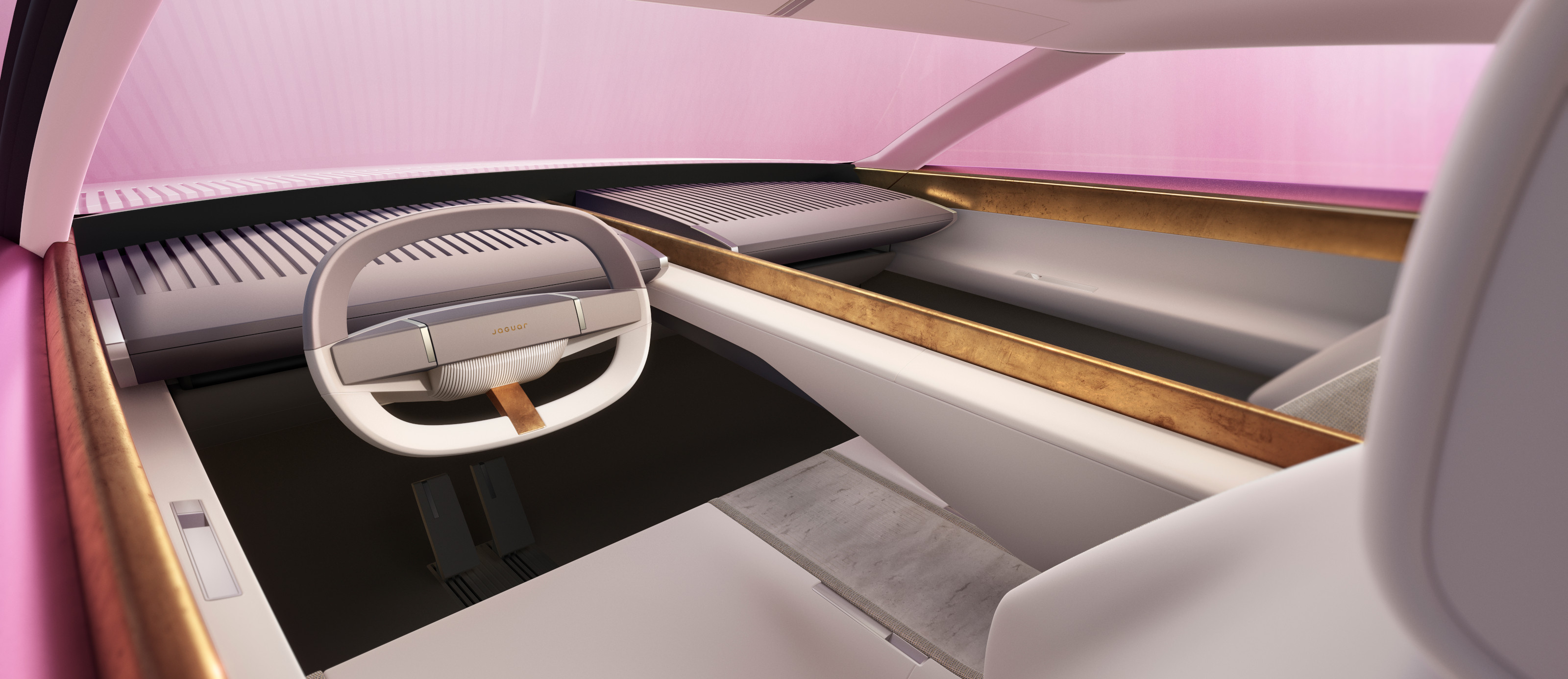
Jaguar Type 00 interior
Jaguar rarely wrested success from these misfires. Even though the cars were good – and often great – these campaigns added to the impermeable layer of nostalgic cruft that put off younger buyers and blurred any clear sense of progress. Every time the company tried to step forwards, its heritage reached out from the grave and yanked it back again. Consider the most impressive Jaguar of recent times, the I-PACE. Impressive to look, even better to drive, yet it was barely profitable and presumably quite internally divisive, for it never got the updates or enhancements that would have kept it competitive in the fast-moving EV market.

In addition to 'Miami Pink', the car also debuts in 'London Blue'
Another issue is the long, long shadow cast by the Jaguar E-Type, obliquely and directly referred to by the Type OO’s name and the fact that the new car debuts as a pair, just like the E-Type did at the 1961 Geneva Motor Show. The E-Type was gradually elevated onto an unassailable pedestal, a singular fetish object that encapsulated British artistry, engineering mastery, as well as the era’s social and sexual liberation, all the while socking it to the Italians while undercutting and outperforming most of the key sports car of the era.

Jaguar Type 00, front three quarters view
Miami Art Week is a very different context to the late, lamented Geneva Motor Show, a deliberate attempt to put clear water between the new Jaguar and the old automotive past, whilst tapping into the moneyed, cultured set that flit about the modern art world. Can a car be art? Note that many of the luxury marques that treat their products like limited edition mechanical sculptures charge accordingly. New Jaguar ownership will not be cheap, but it certainly won’t be approaching these upper echelons.
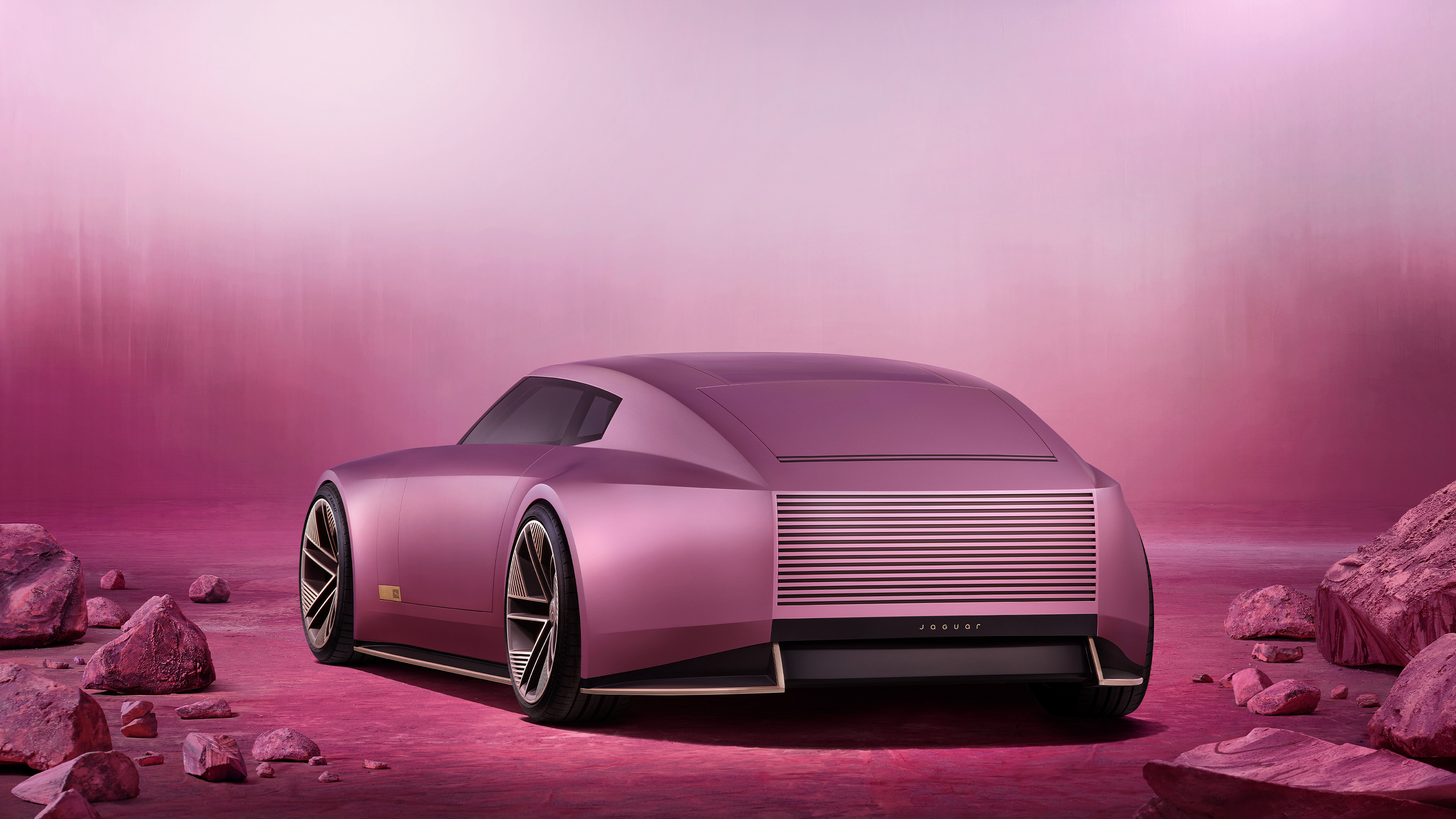
Jaguar Type 00, rear three quarters view
According to McGovern, ‘Type 00 is … the result of brave, unconstrained creative thinking, and unwavering determination. It is our first physical manifestation and the foundation stone for a new family of Jaguars that will look unlike anything you’ve ever seen. A vision which strives for the highest level of artistic endeavour.’ This vision is neatly summarised by three words, ‘exuberant’, ‘modernist’ and ‘compelling’, tapping into the future-facing folk who will hopefully buy these cars, whilst also overcoming the deeply ingrained problem of heritage and cultural memory through allusions to Jaguar founder Sir William Lyons’ belief that ‘Jaguar should be a ‘copy of nothing’ and that its cars should be considered as artforms.’
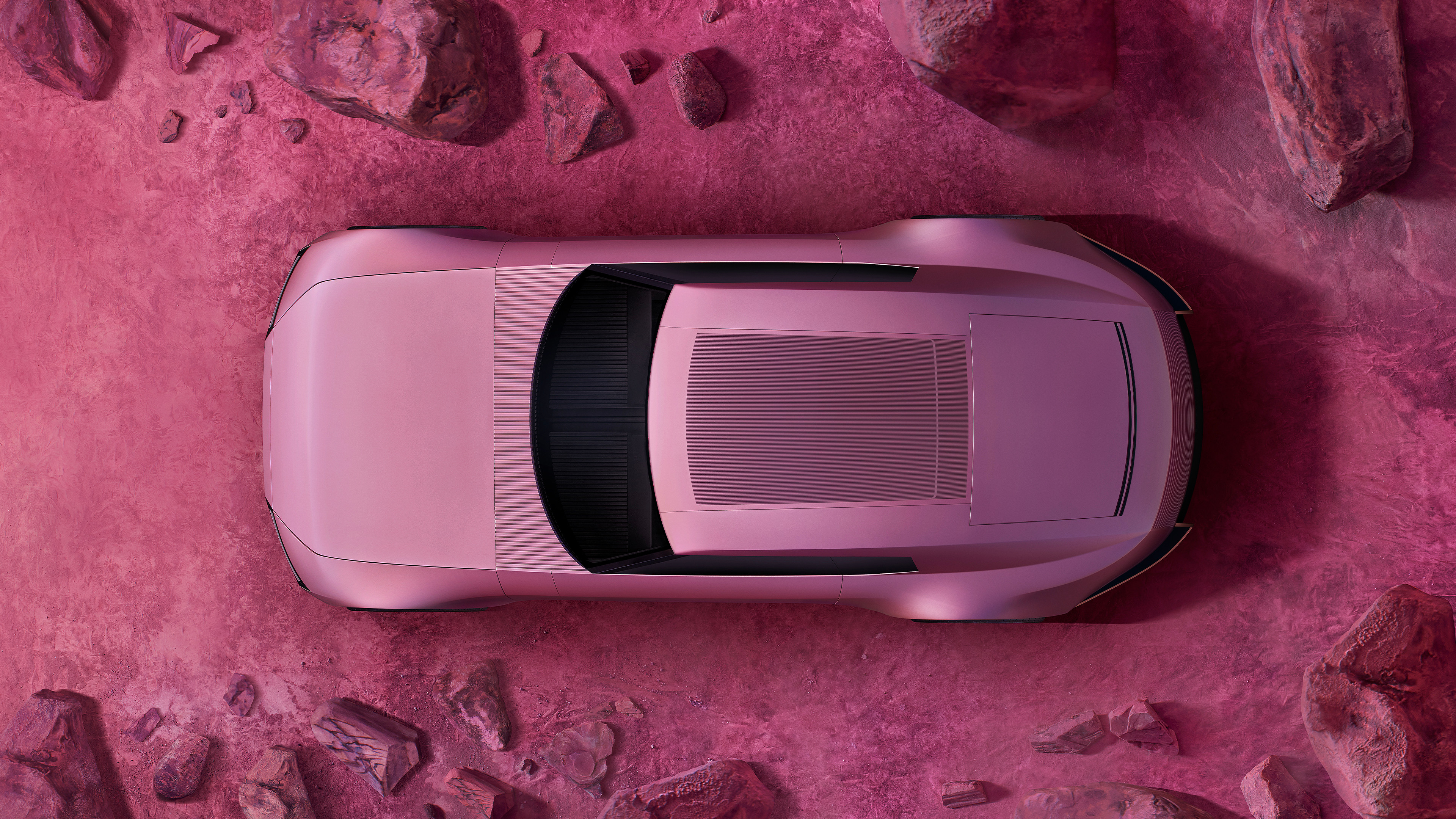
The Jaguar Type 00
After Miami, Jaguar will open up a number of exclusive brand stores in key global locations, ‘dramatic environments [that] will present an immersive step into the world of Jaguar that embraces their setting and local culture.’ And although the overall thrust of the campaign has had its detractors, the attention to detail can’t be faulted – the press release came in a typeface called ‘Jaguar Exuberant’, complete with subtle but distinctive ‘ti’ ligature.
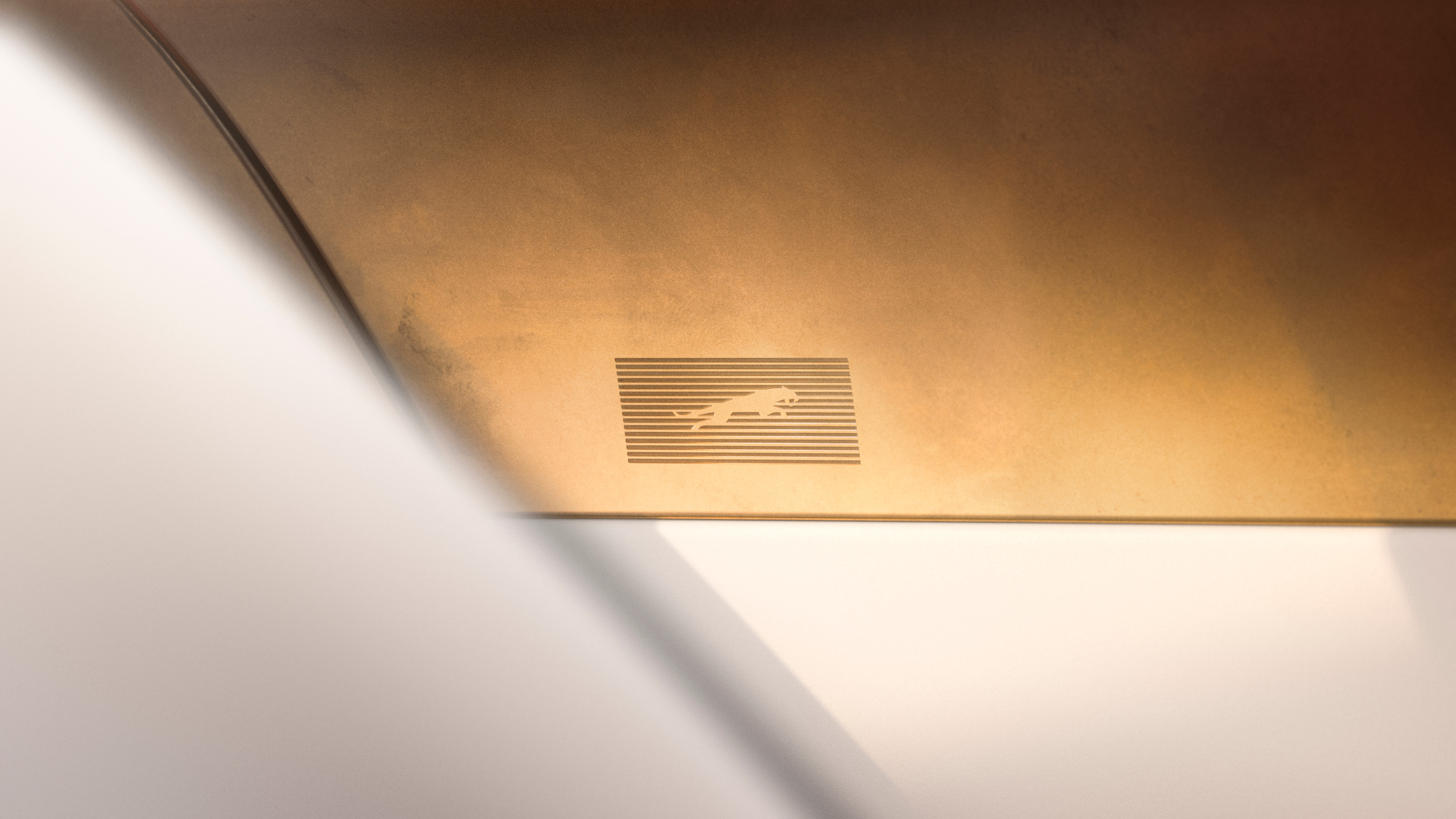
The concept has exquisite detail design
Jaguar is being talked about, more so than ever before. Come 2026, will the automotive landscape have changed to better accommodate its vision? In addition to the higher-end offerings from start-ups like Lucid, there’ll be Bentley’s forthcoming and ominous-sounding Luxury Urban SUV, the company’s very first pure EV. Similarly pitched machines from the likes of Ferrari, Lamborghini and Aston Martin will be on the horizon, if not already on the streets.
Porsche arguably occupies this space already, and then there’s the deluge of new brands and models from China, many of which are making an explicit play for high-end customers who are unconcerned by heritage or history. Whether current owners like it or not, Jaguar expects future customers will be swanning around Shenzhen or San Francisco, rather than Surrey.
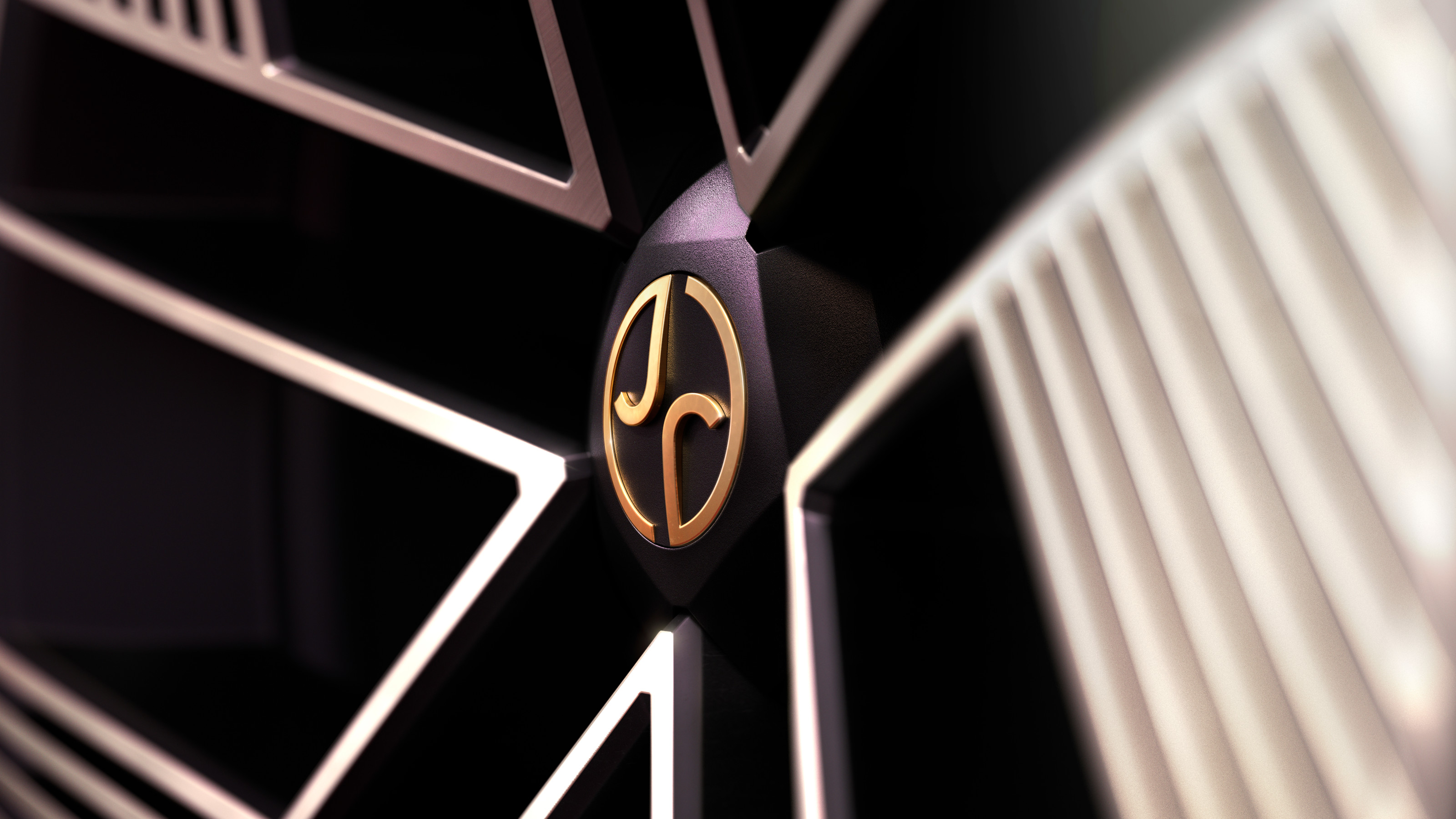
Detail of the new Jaguar monogram on the wheels
Automotive advertising is slavishly governed by cliché, and in visual terms, Jaguar has undeniably broken away from the pack, even if its clichés have been cut from a slightly different cloth. In any case, we expect that McGovern and his team are flattered by the storm they’ve whipped up. The Avant Garde, or at least the obviously different, has always served as a lightning rod for reactionary thinking.
Jaguar 2.0 has been no different. The pent-up online rage, the bandying about of the dreaded 'w' word, the virtual tantrums, mic drops and slammed doors as countless Jaguar lifers leave the chat in red-faced fury. Think of Type 00 as a four-wheeled counterpoint to Maurizio Cattelan's banana, or Carl André's bricks, if you want to go back a few decades. If it riles you up, you're probably not the intended audience.
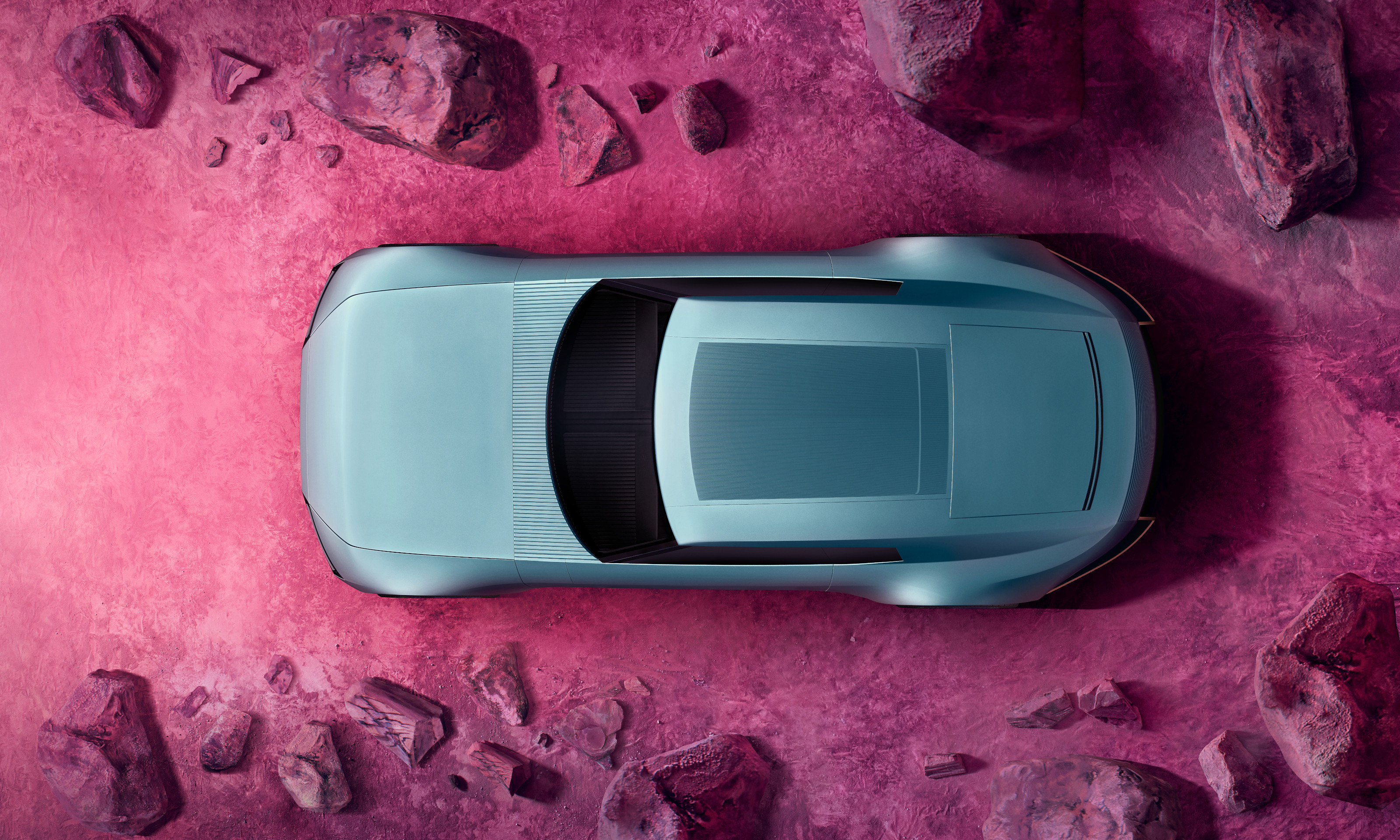
Jaguar Type 00 concept in London Blue
Nevertheless, if it all goes horribly wrong, the brand will have little choice but to enter cryostasis and attempt a revival further down the road. One thing is for sure; one person’s luxury statement is another’s gauche misstep. In Martin Amis’s dark satirical paean to 80s excess, Money, his antihero John Self drives a large, self-regarding, and overbearing sports car. Its name? The Fiasco.
‘Now my Fiasco, it’s a beautiful machine, a vintage-style coupé with oodles of dash and heft and twang. The Fiasco, it’s my pride and joy… It is temperamental, my Fiasco, like all the best racehorses, poets and chefs… There are some … who believe that the Fiasco errs on the side of ostentation, that the Fiasco is in questionable taste. But what do they know.'
Jonathan Bell has written for Wallpaper* magazine since 1999, covering everything from architecture and transport design to books, tech and graphic design. He is now the magazine’s Transport and Technology Editor. Jonathan has written and edited 15 books, including Concept Car Design, 21st Century House, and The New Modern House. He is also the host of Wallpaper’s first podcast.
-
 Warp Records announces its first event in over a decade at the Barbican
Warp Records announces its first event in over a decade at the Barbican‘A Warp Happening,' landing 14 June, is guaranteed to be an epic day out
By Tianna Williams
-
 Cure your ‘beauty burnout’ with Kindred Black’s artisanal glassware
Cure your ‘beauty burnout’ with Kindred Black’s artisanal glasswareDoes a cure for ‘beauty burnout’ lie in bespoke design? The founders of Kindred Black think so. Here, they talk Wallpaper* through the brand’s latest made-to-order venture
By India Birgitta Jarvis
-
 The UK AIDS Memorial Quilt will be shown at Tate Modern
The UK AIDS Memorial Quilt will be shown at Tate ModernThe 42-panel quilt, which commemorates those affected by HIV and AIDS, will be displayed in Tate Modern’s Turbine Hall in June 2025
By Anna Solomon
-
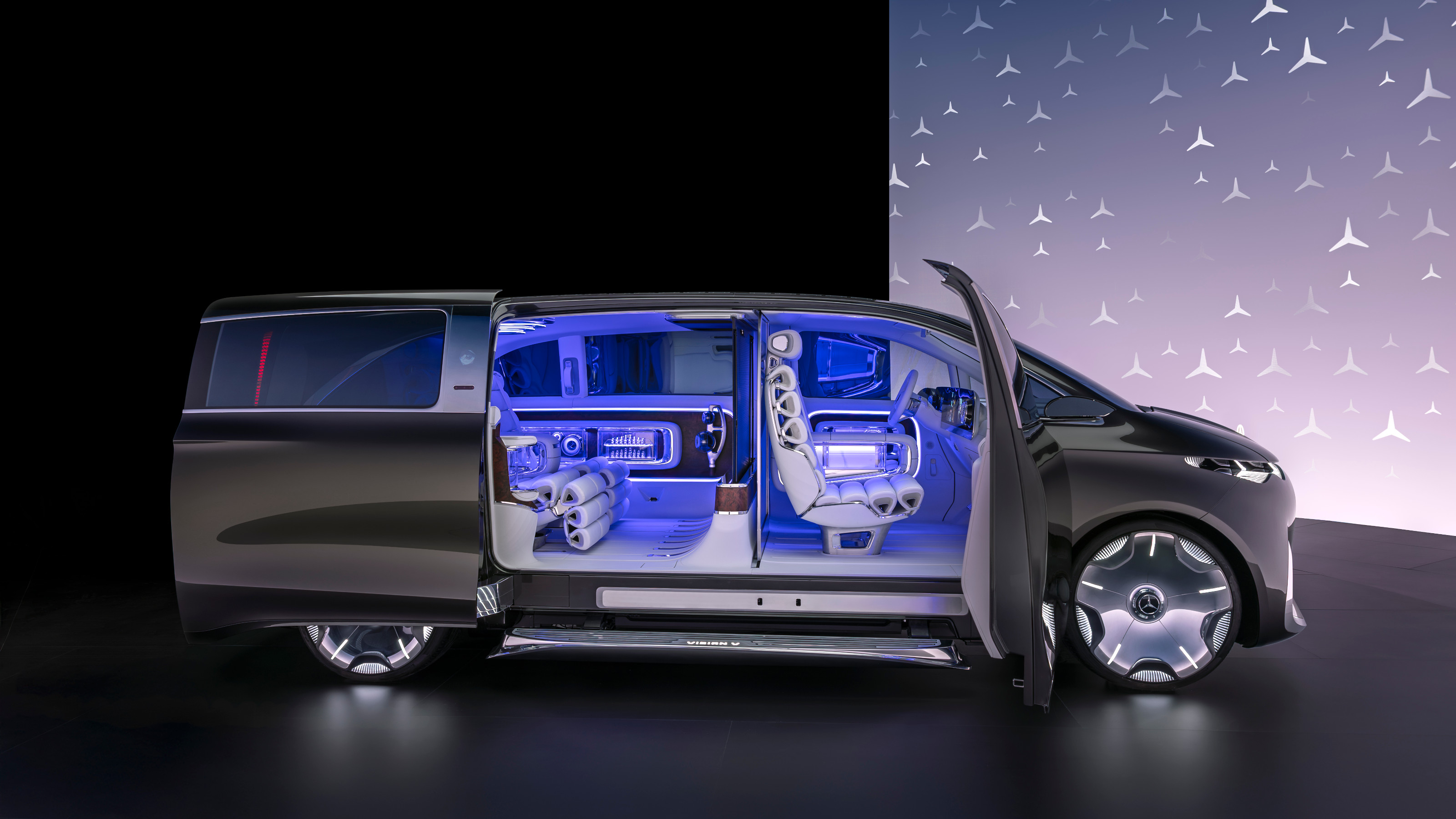 Mercedes-Benz previews its next-gen people mover with an ultra-luxury EV concept
Mercedes-Benz previews its next-gen people mover with an ultra-luxury EV conceptThe Mercedes-Benz Vision V Concept is an art deco picture palace on wheels, designed to immerse passengers in parallel worlds as they travel
By Jonathan Bell
-
 2025 Seoul Mobility Show report: all that's new and notable
2025 Seoul Mobility Show report: all that's new and notableOpened at a time of high national drama, the 2025 Seoul Mobility Show has gone on to underscore Korea’s place at the cutting edge of the auto industry. Guy Bird was there
By Guy Bird
-
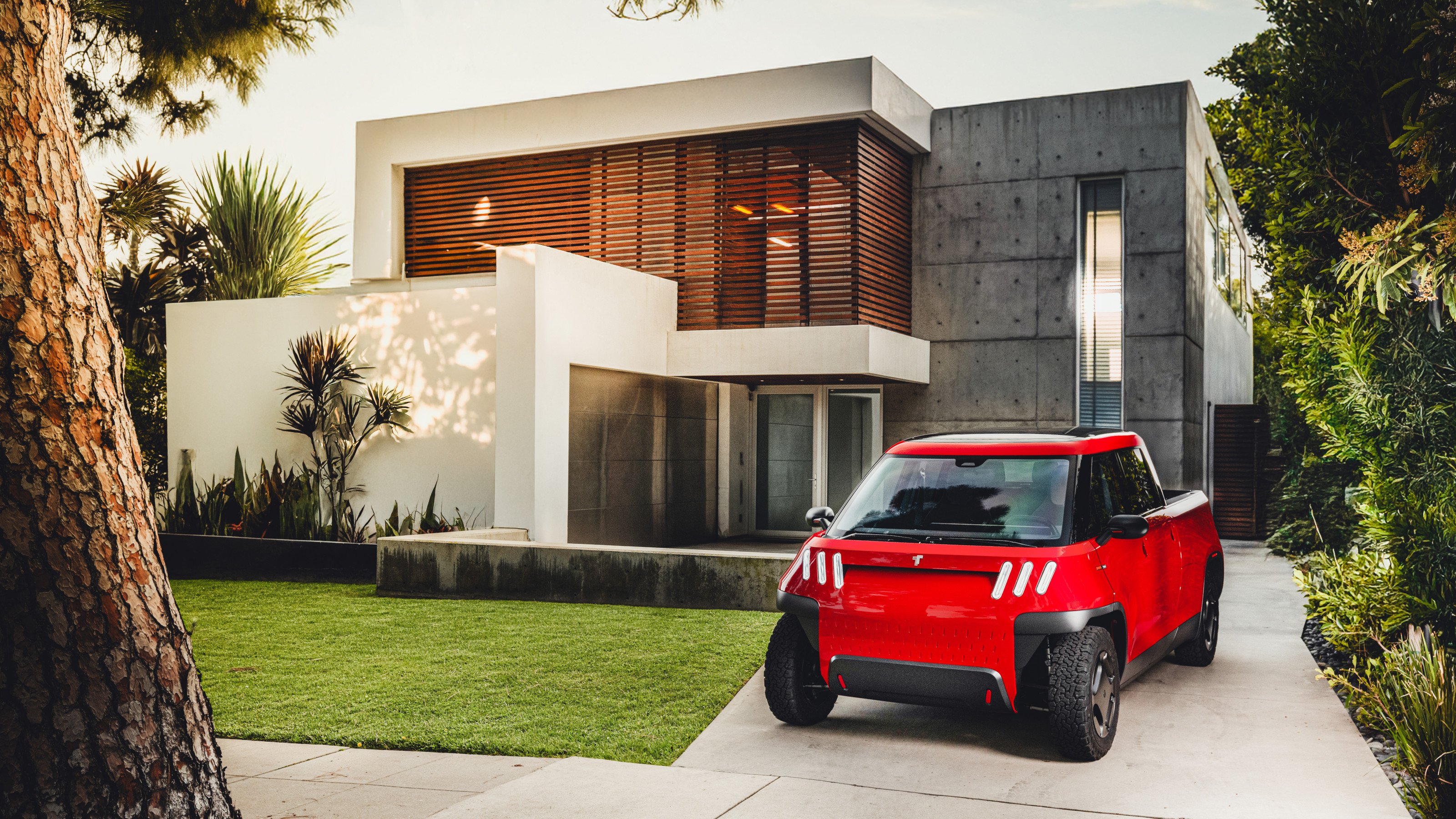 Meet the final drivable prototype of the Telo MT1 pickup truck, shaped by Fuseproject
Meet the final drivable prototype of the Telo MT1 pickup truck, shaped by FuseprojectThe Telo MT1 is a modestly scaled EV that turns the traditional all-American approach to pick-up truck design on its head
By Jonathan Bell
-
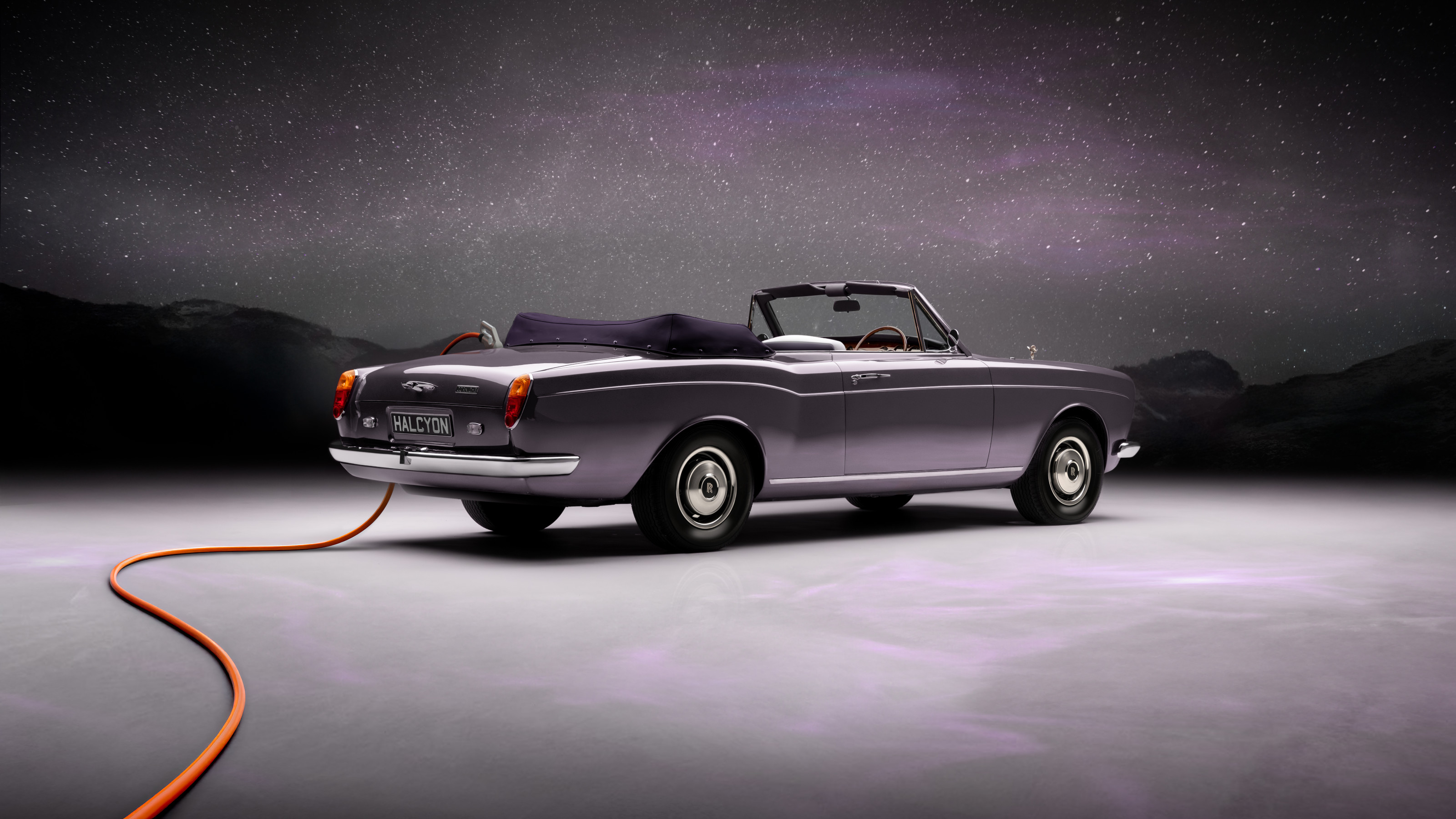 EV start-up Halcyon transforms a classic 1970s Rolls-Royce into a smooth electric operator
EV start-up Halcyon transforms a classic 1970s Rolls-Royce into a smooth electric operatorThis 1978 Rolls-Royce Corniche is the first fruit of a new electric restomod company, the Surrey-based Halcyon
By Jonathan Bell
-
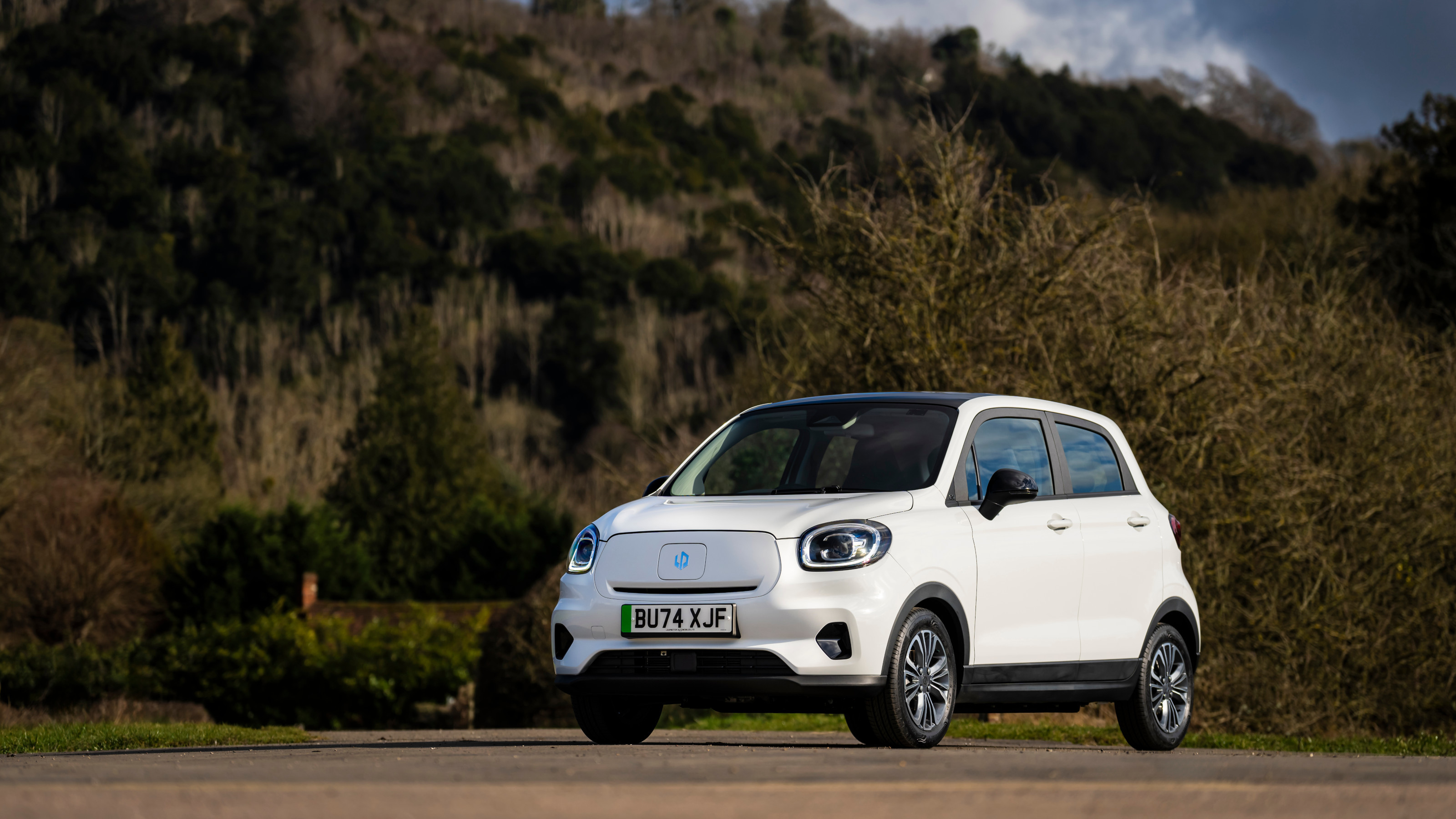 China’s Leapmotor pounces on the European car market with its T03 city car and C10 SUV
China’s Leapmotor pounces on the European car market with its T03 city car and C10 SUVLeapmotor’s tiny electric city car could be just the tonic for cramped urban Europe. We sample the T03 and its new sibling, the fully loaded C10 SUV, to see if the company’s value proposition stacks up
By Jonathan Bell
-
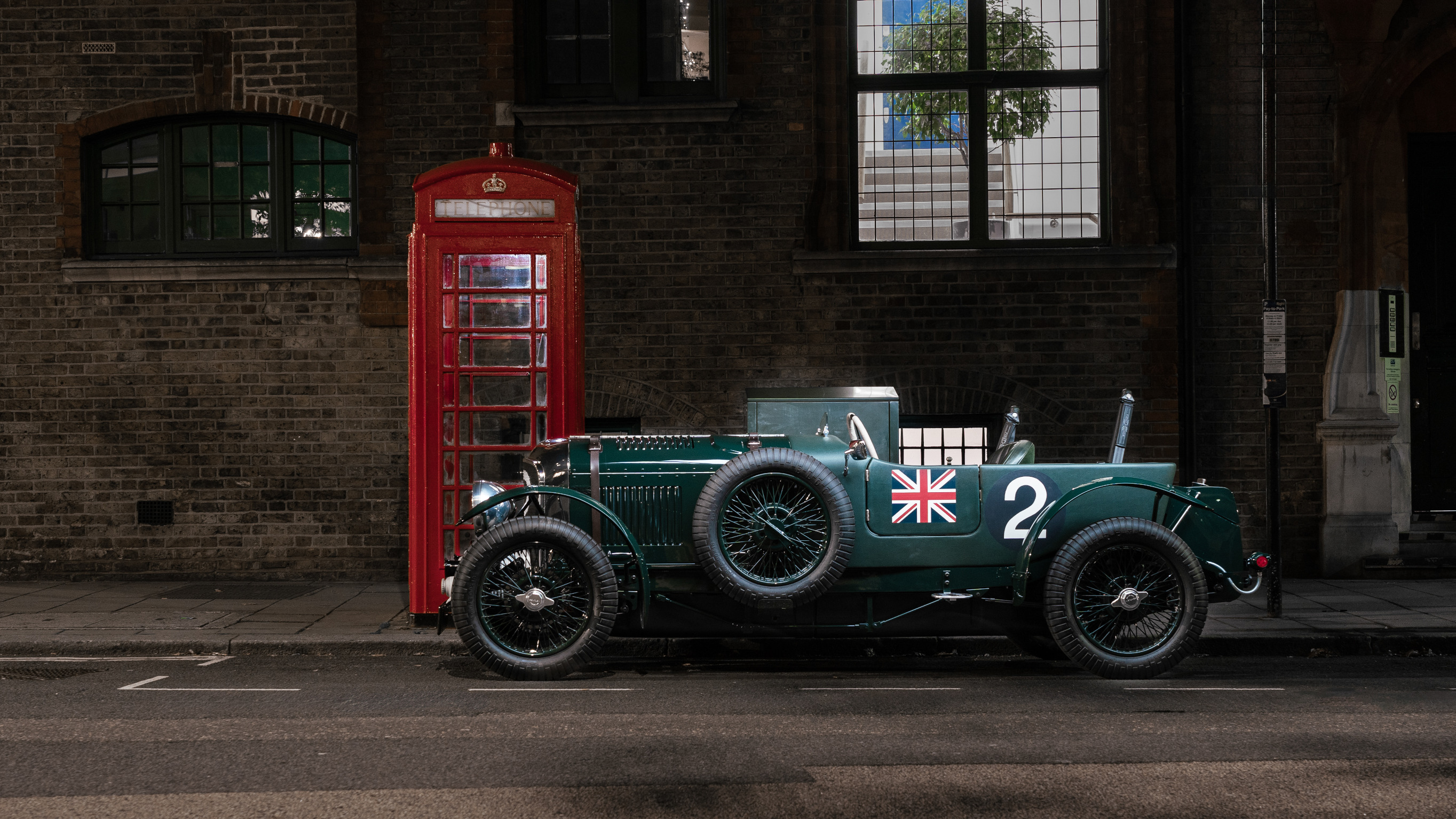 Wallpaper* takes the wheel of the Bentley Blower Jnr for a rich automotive experience
Wallpaper* takes the wheel of the Bentley Blower Jnr for a rich automotive experienceHedley Studios has shrunk the mighty Bentley Blower into this all-electric, road-legal barnstormer. We take it to the streets of London
By Jonathan Bell
-
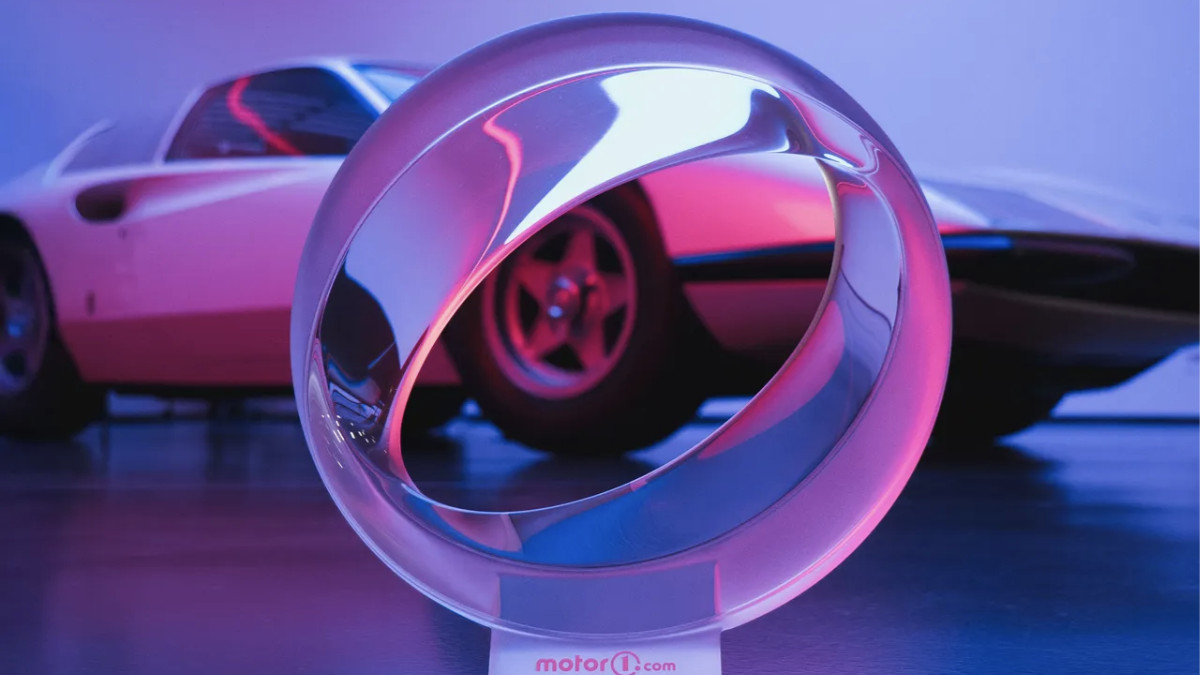 We are the world: Pininfarina’s ‘Orbis’ taps Papal support for an eco-friendly agenda
We are the world: Pininfarina’s ‘Orbis’ taps Papal support for an eco-friendly agendaThe Orbis is a ‘symbolic object’, a gift to Pope Francis from the Italian design agency at a time of political upheaval and social fracture around all aspects of sustainability
By Jonathan Bell
-
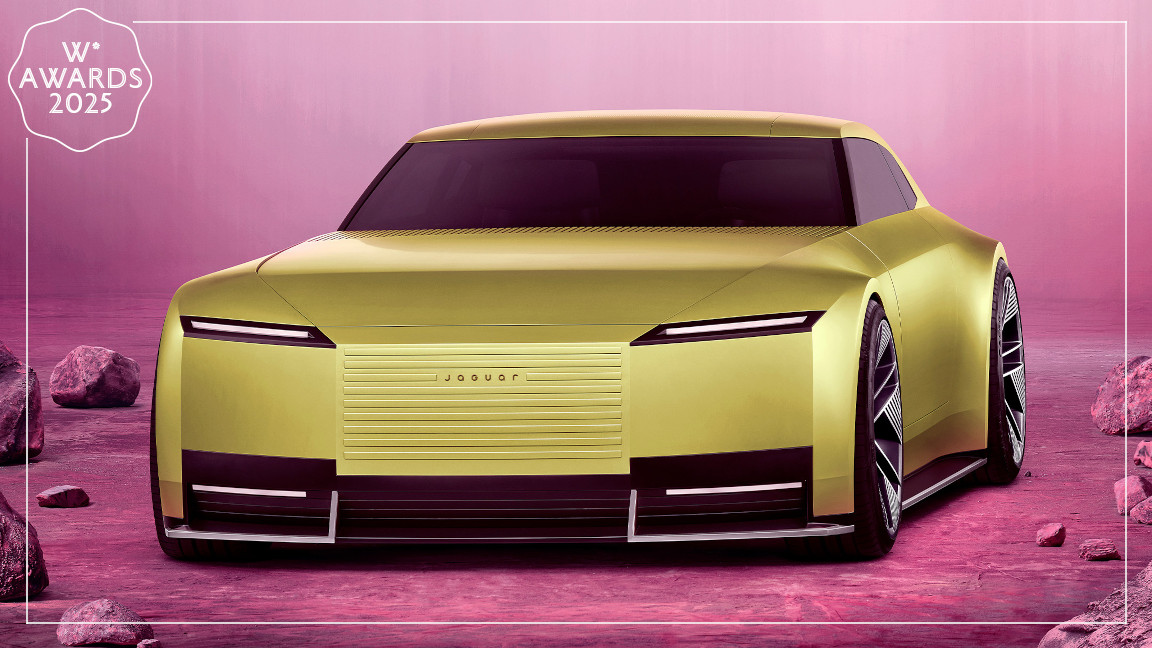 Jaguar’s big rethink earns its Type 00 concept car a Wallpaper* Design Award 2025
Jaguar’s big rethink earns its Type 00 concept car a Wallpaper* Design Award 2025We salute the forward-thinking and bold choices of the dramatic Jaguar Type 00 Concept, a preview of next year's all-new electric GT
By Jonathan Bell